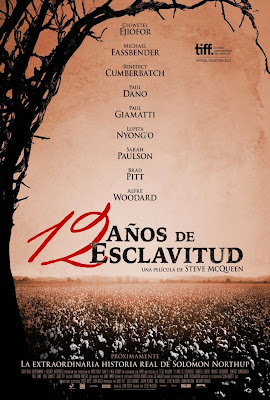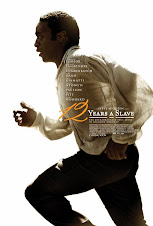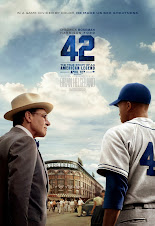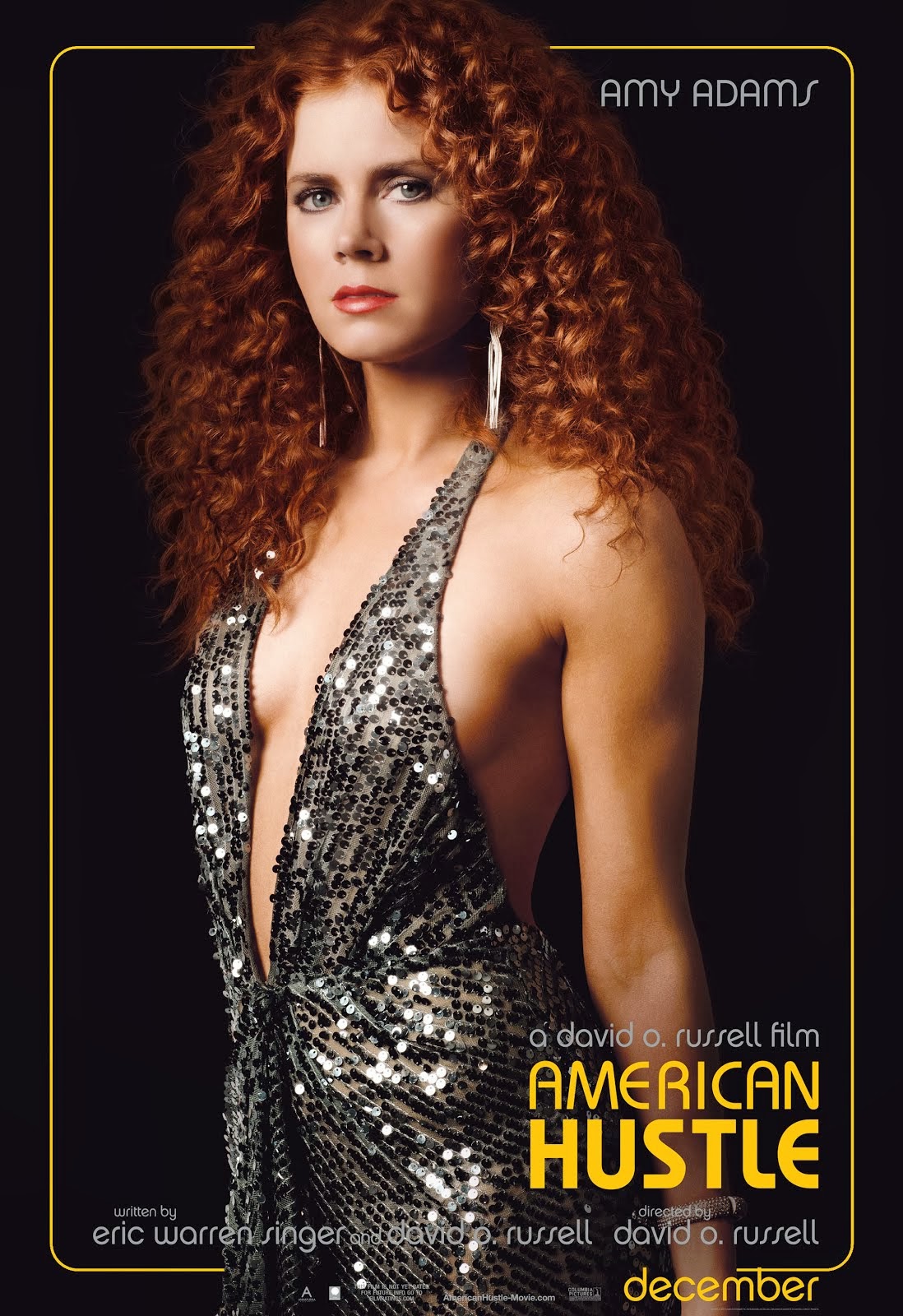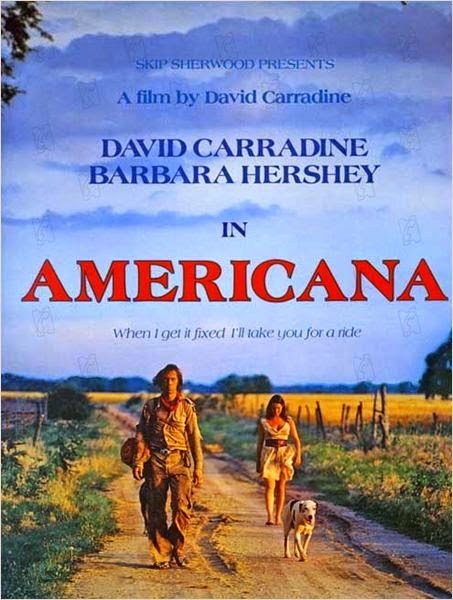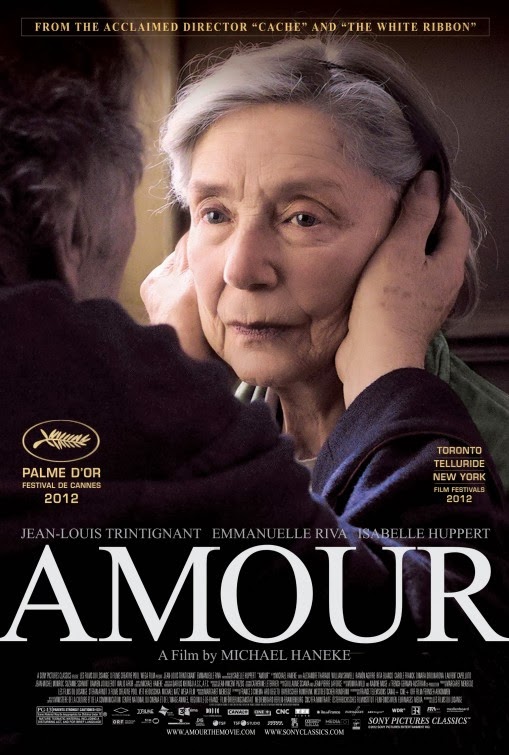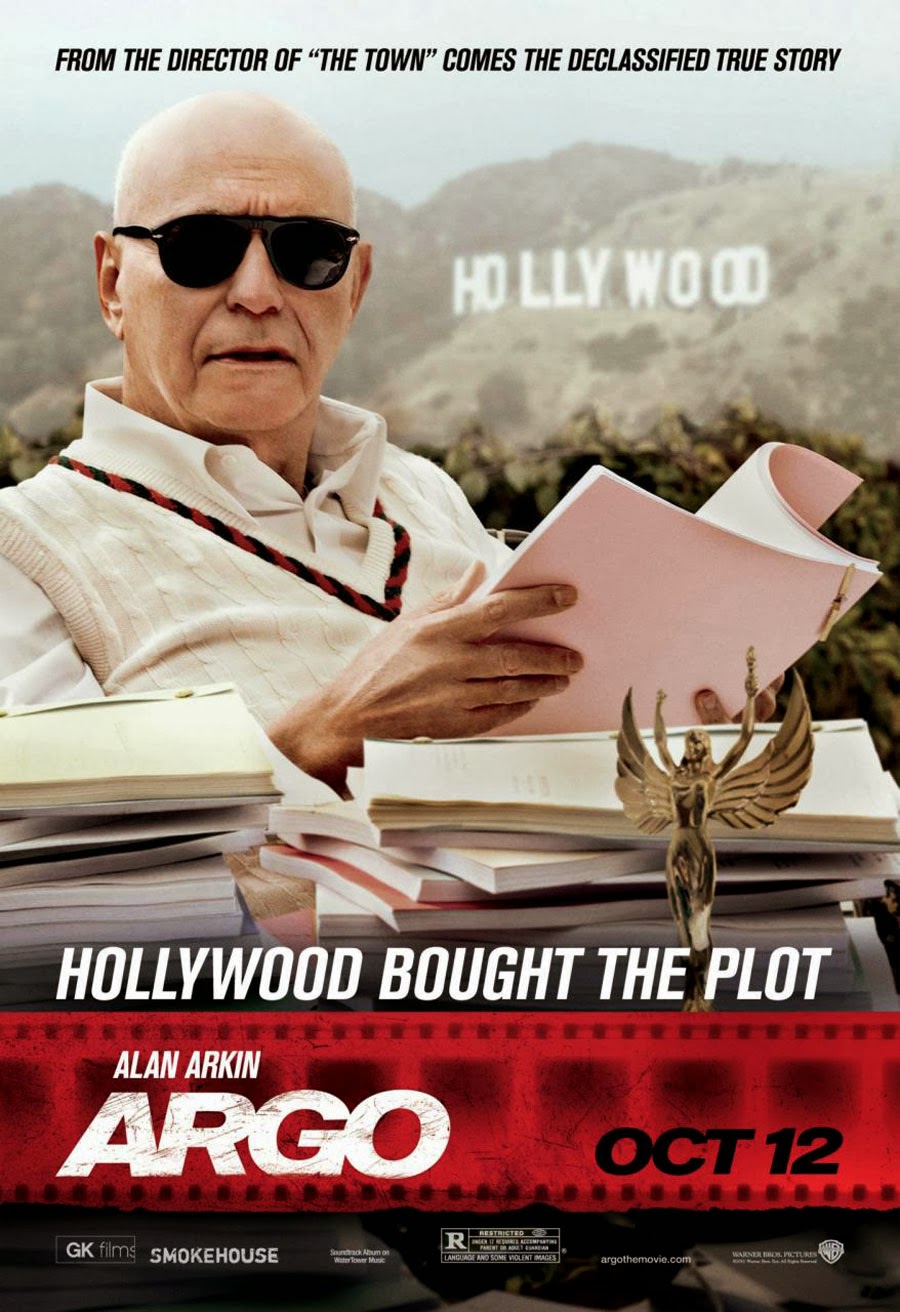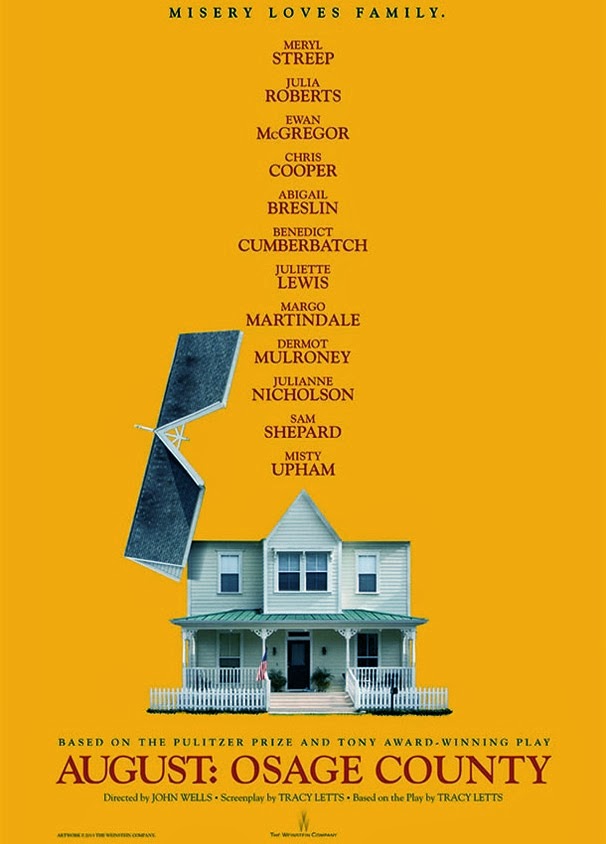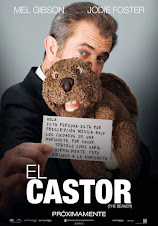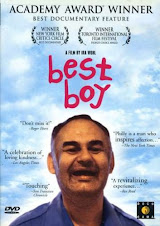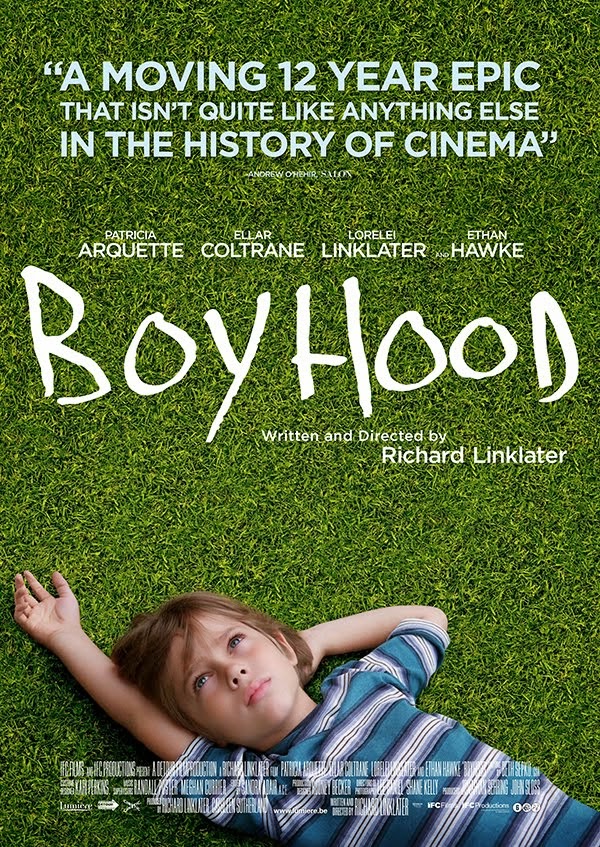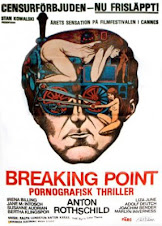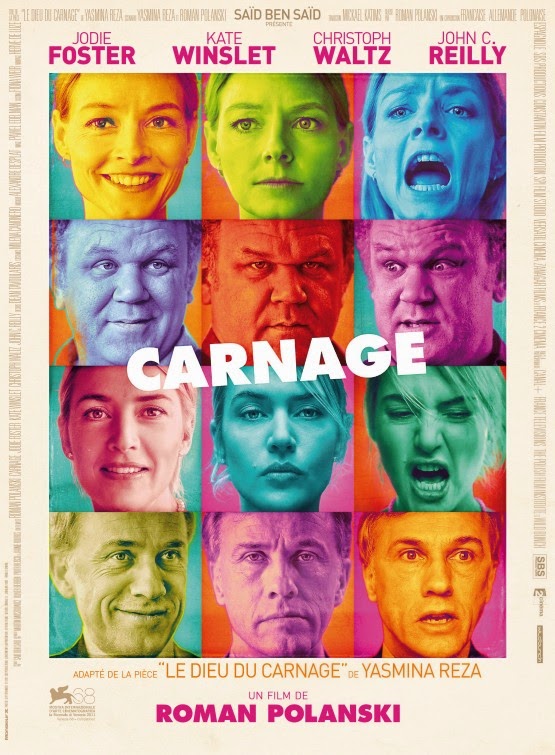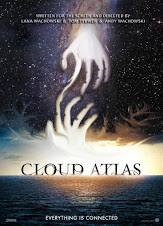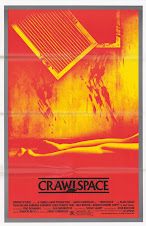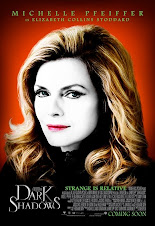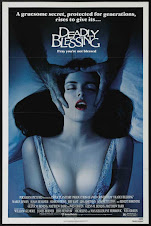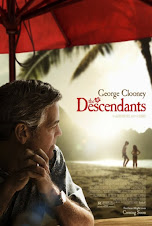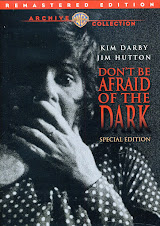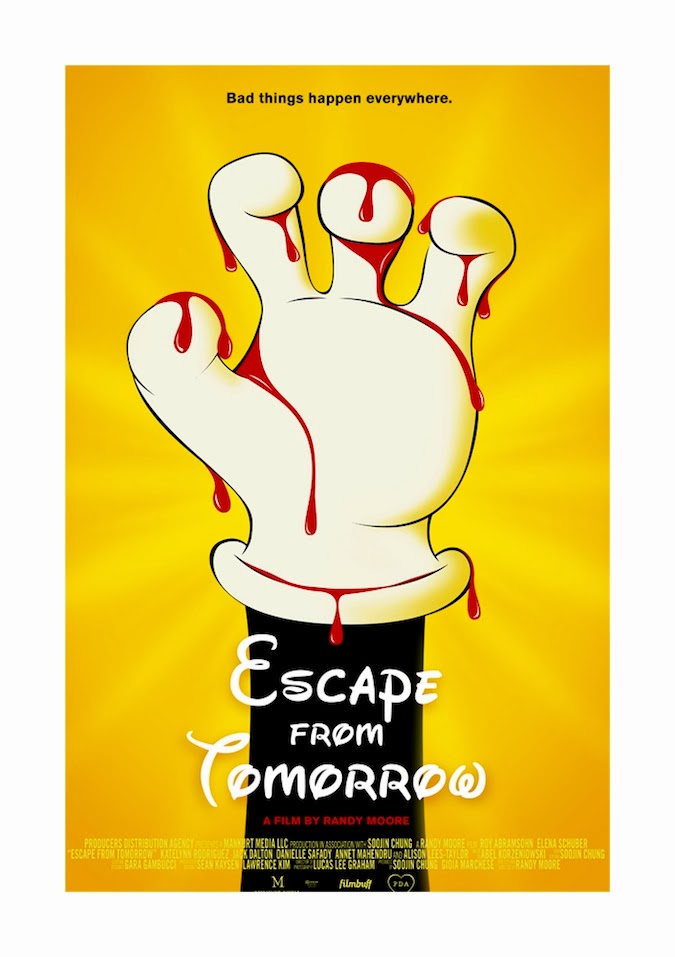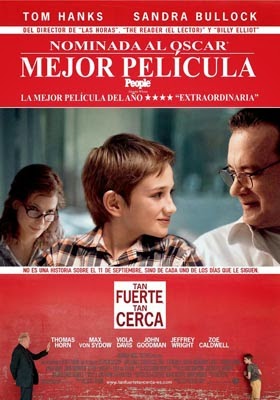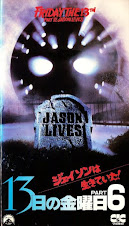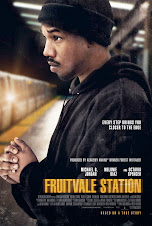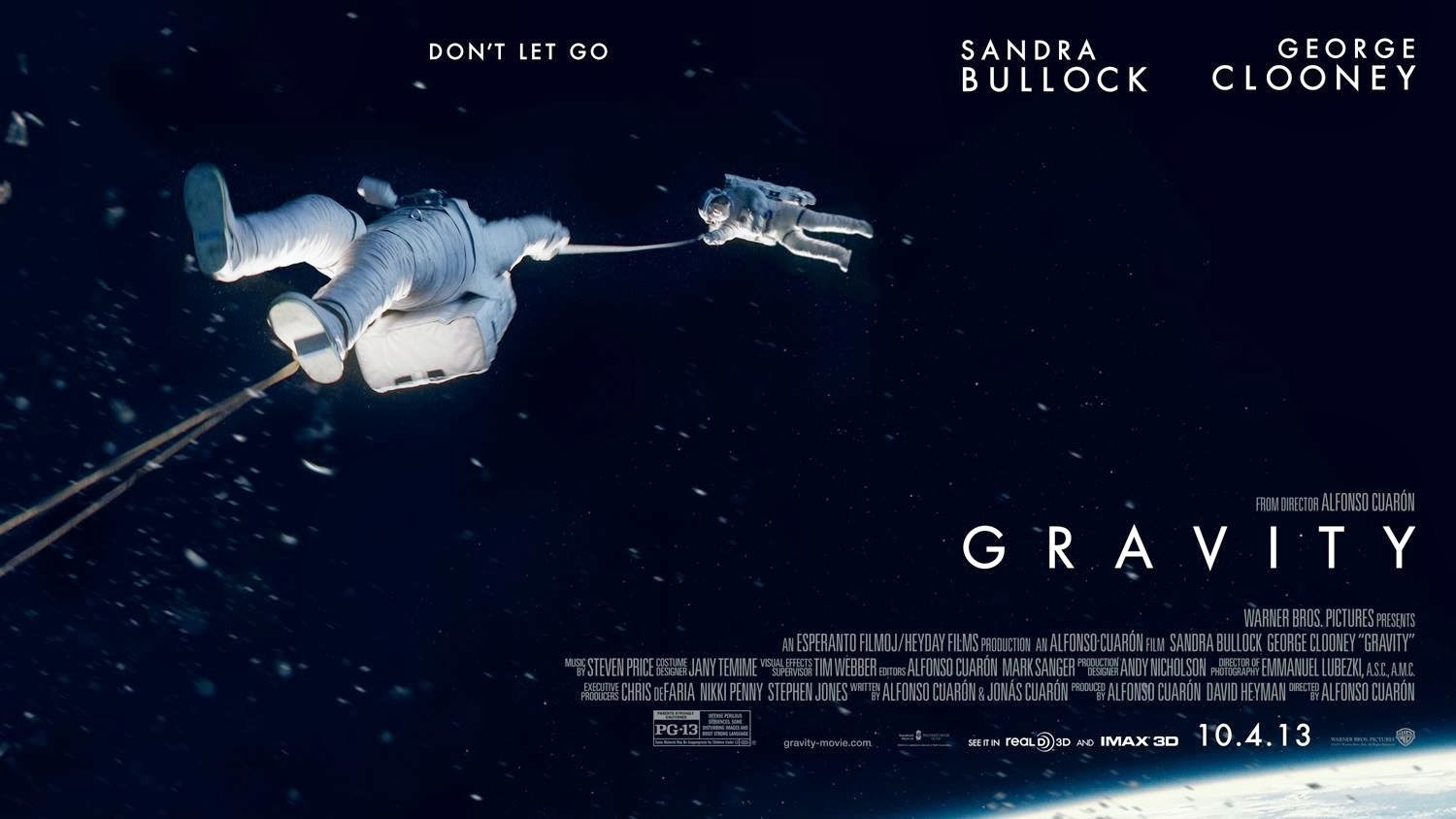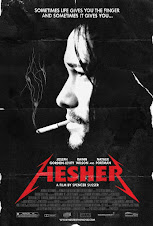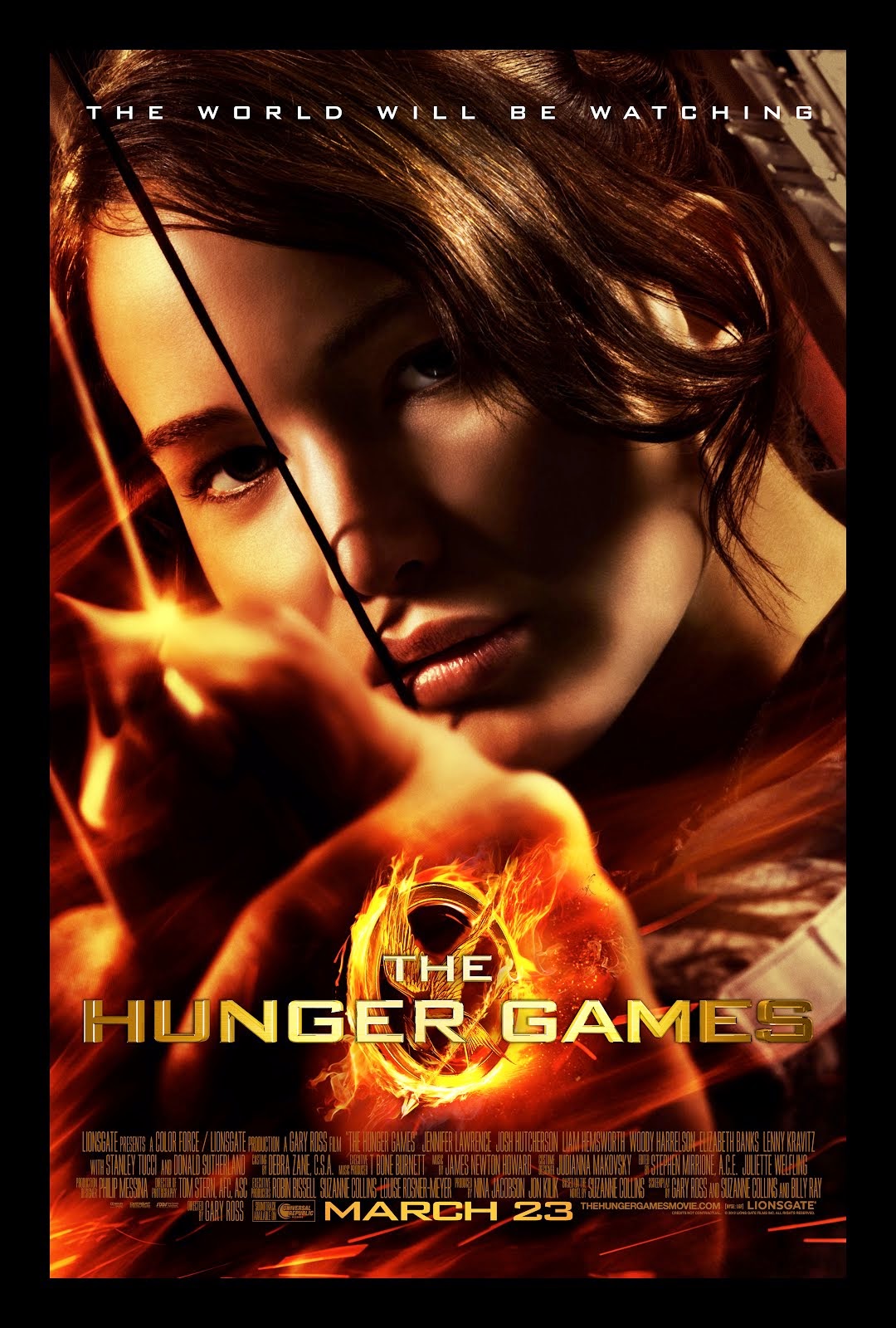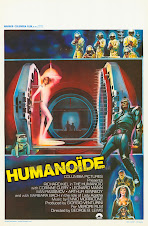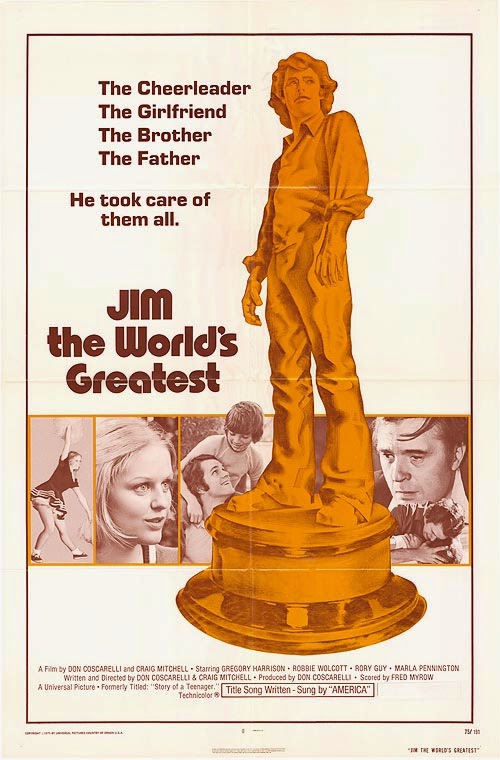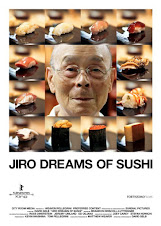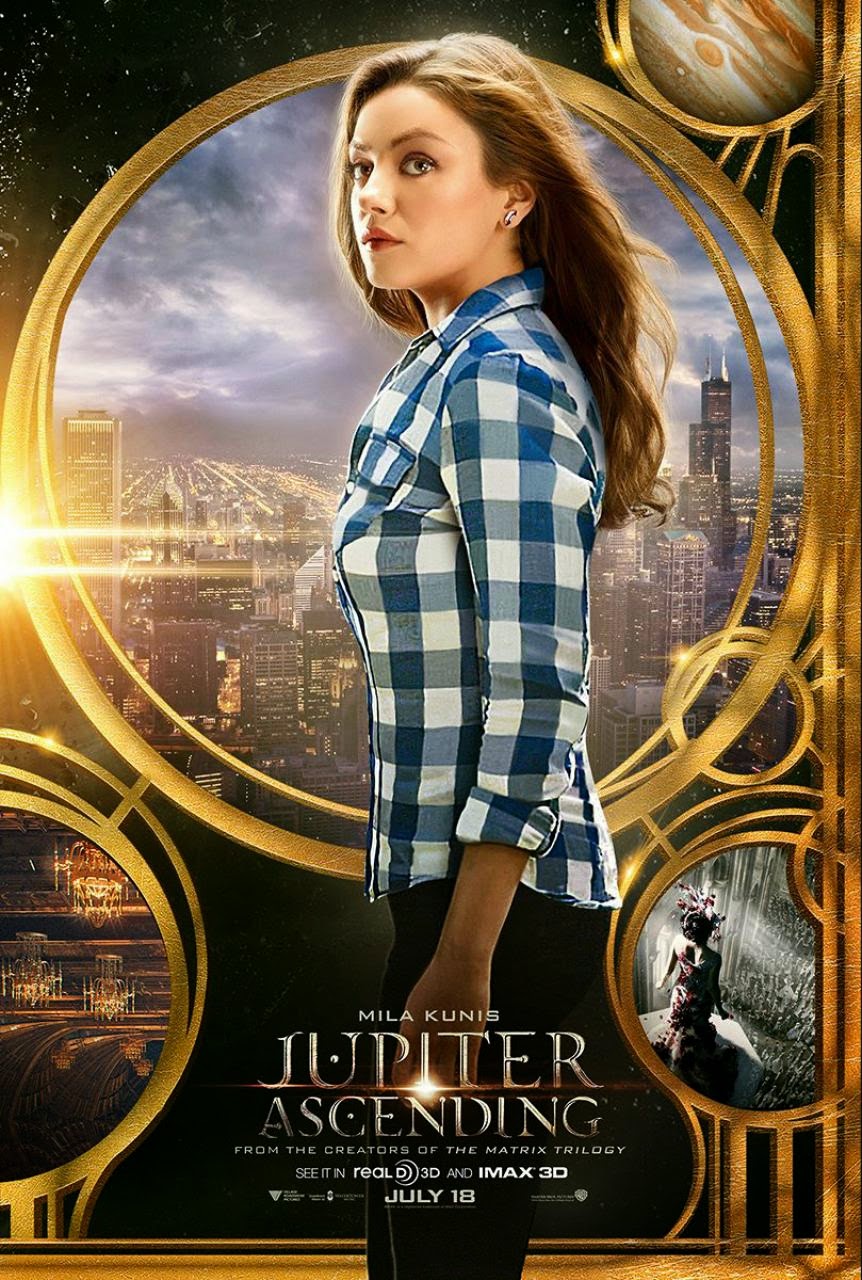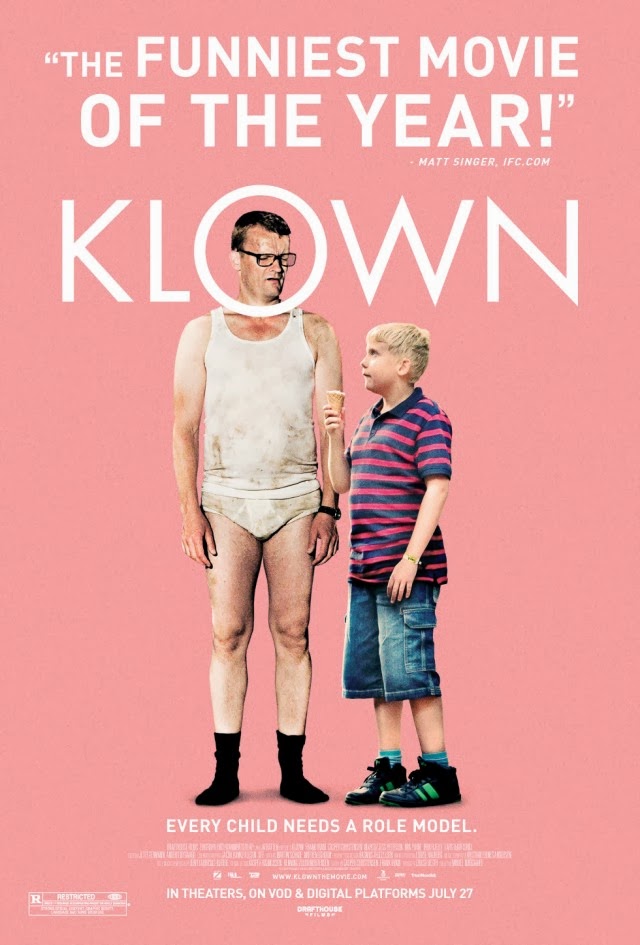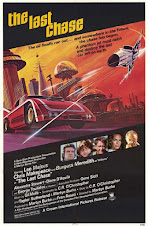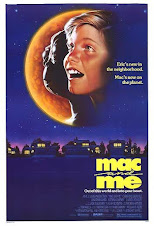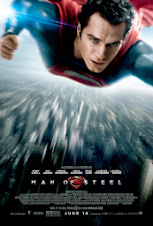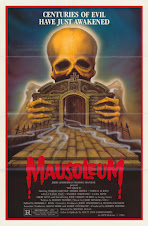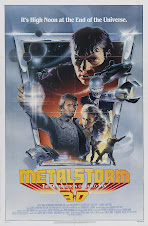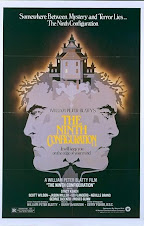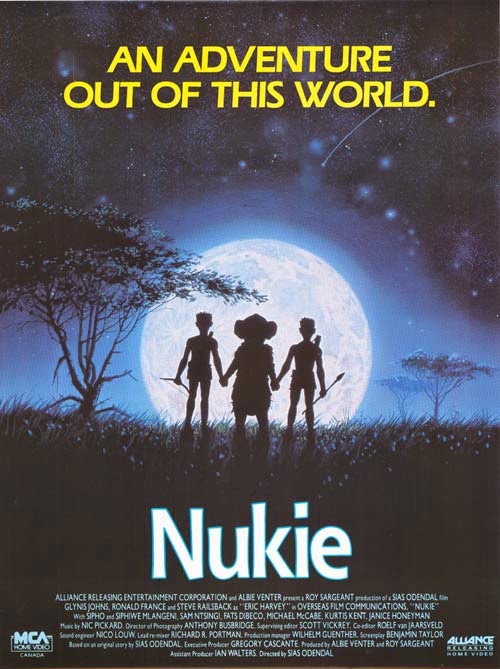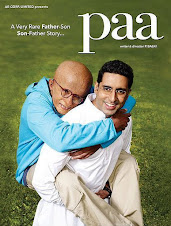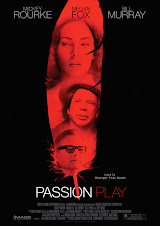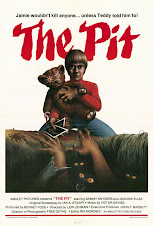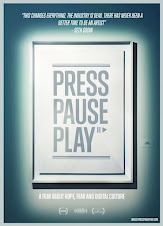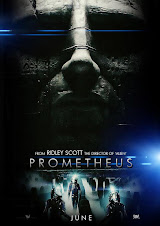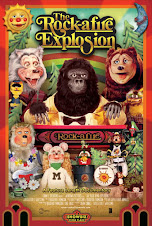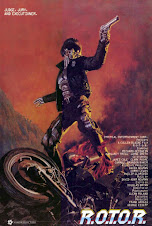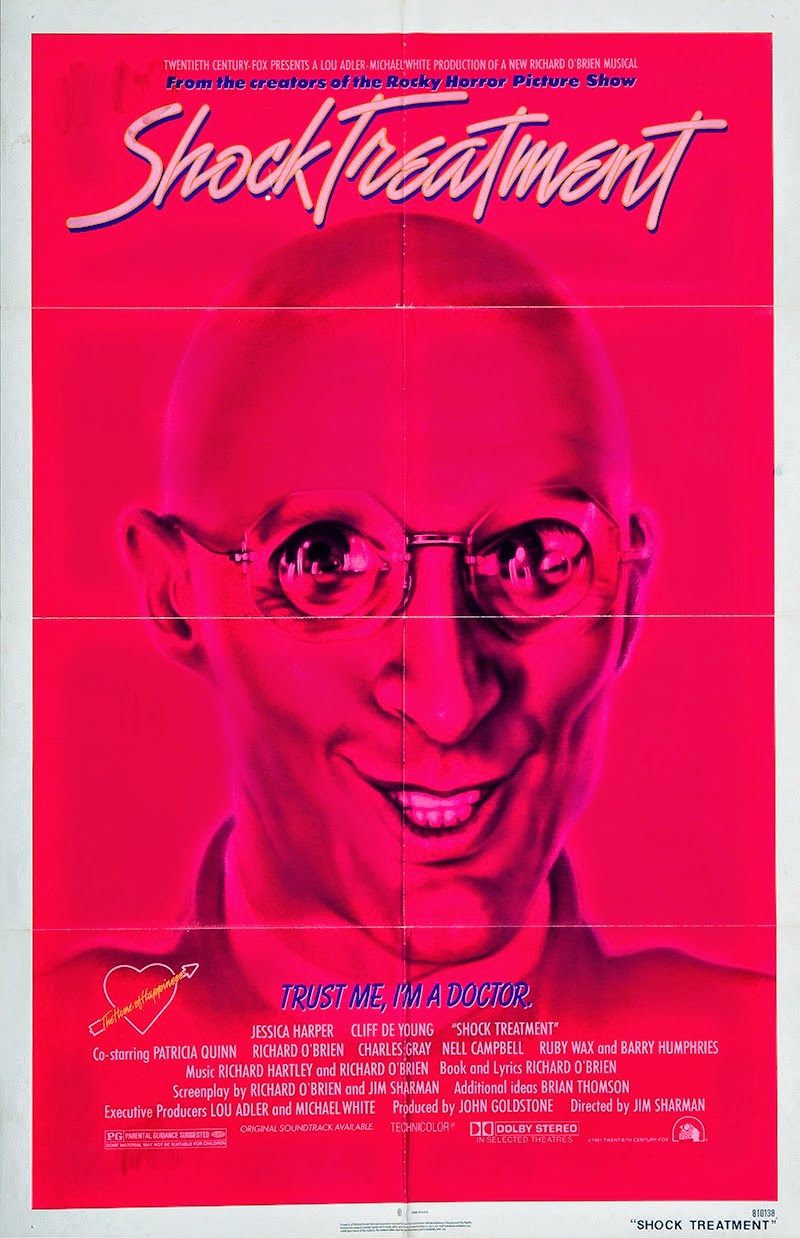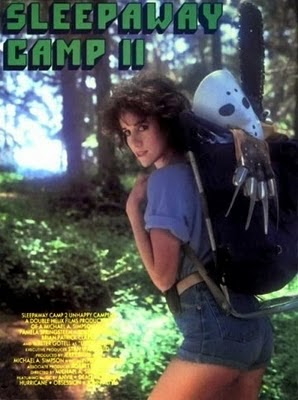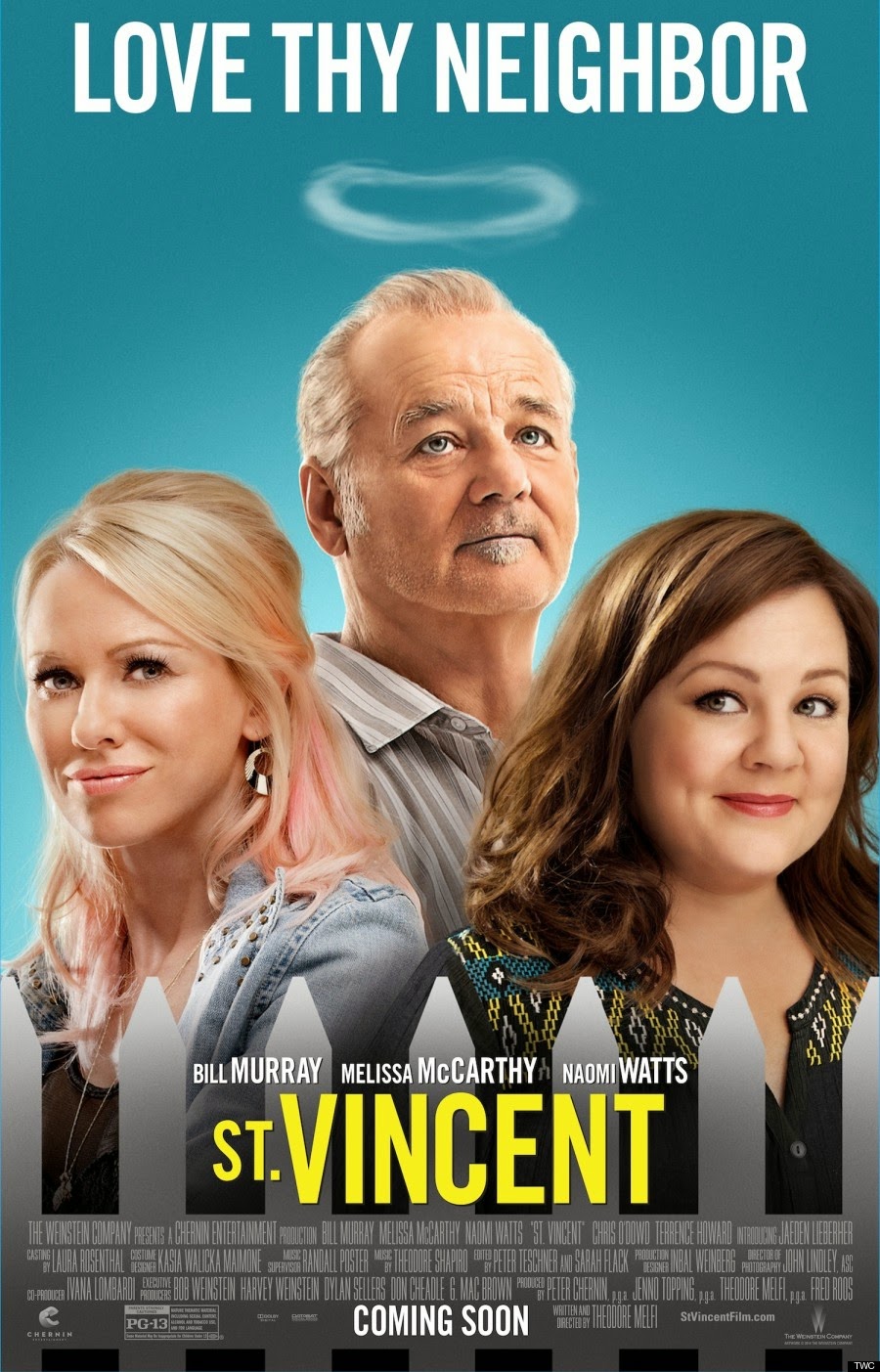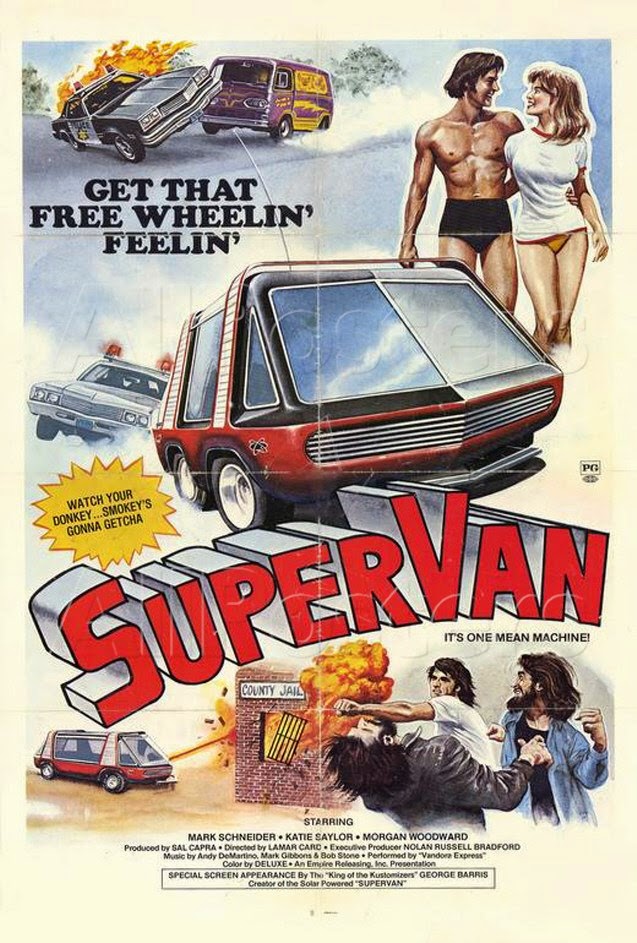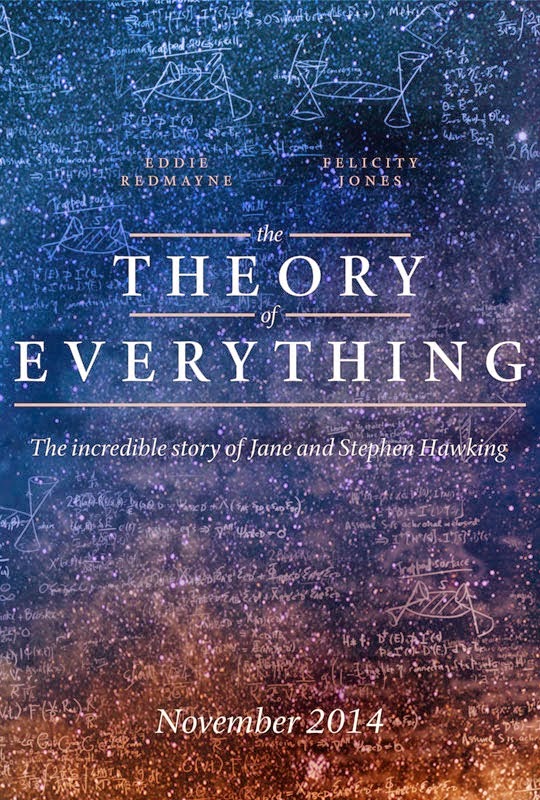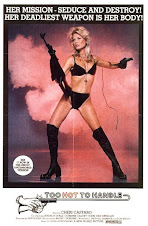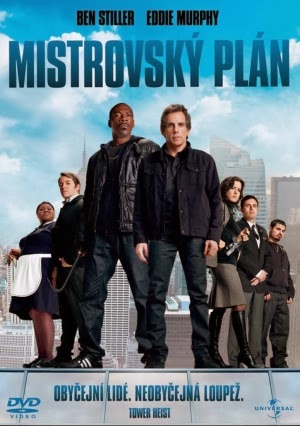“Night Train to Terror” is the cinematic equivalent of saying, “Screw it.” This horror anthology, kind of, film is comprised of three, at the time, unfinished films condensed into a 95 minute fun-filled delight. It is not a true anthology film like “Creepshow,” in which the segments were meant to be 25-30 minutes each and were written that way. “Night Train to Terror” takes what are presumably the best parts of these three films and places them amongst wraparound bits in which God and Satan discuss whether a particular character in each of the three segments deserve damnation of salvation. Before any philosophical debate begins, though, we are treated to the sounds of an on board nameless 80’s band that performs the same song four different times. You can enjoy the song here: It’s not a bad song and it never gets tiresome, nor does the film, despite it’s slapped together-edness. If you add “ed-ness” to the end of some words, you can maybe convince some of your friends that this new word actually exists.
At first glance, one may instinctively think that the slapped together nature of “Night Train to Terror” means that it is going to be a heap of dung. Such is not the case. It’s more of a heap of fun, especially if you go into to it with the right mindset. I originally saw this film on a crappy quality dvd, an obvious vhs to dvd transfer. I believe this is one of those many public domain films that get subpar dvd releases and usually are vhs to dvd transfers. Seeing “Night Train to Terror” on blu-ray (yes, I saw this movie on blu-ray….and paid to do so) is like seeing a different movie. The image is not distorted and the picture quality is very good. To be brief, the three stories are: 1. A man (John Phillip Law) is used as bait to lure women into an organ harvesting operation. Richard Moll from “Night Court” is in this segment as an orderly. 2. A man has an affair with another man’s girlfriend and is, as a strange kind of revenge, invited to participate in a “death wish club.” This is not a club that involves repeated viewings of those Charles Bronson movies. This segment features some curb-jumping style acting and an automotronic flying bug. 3. A writer’s latest book makes the claim that God does not exist. This man is played by Richard Moll from “Night Court,” so we get to see Bull once again, this time wearing what must surely be a toupee. Satan or one of Satan’s employees wants Bull to work for him at Satan Industries (We Put the “E” in Evil). The man who plays Satan looks like a cross between David Cassidy from “The Partridge Family” and Simon Ward, the actor who played a Satan-esque character in “Holocaust 2000.” That’s pretty much all you need, but this segment also features some funny Claymation effects, Cameron Mitchell hamming it up, and disco music!! The first film appears to have made in 1982 or 83, the second film around the same time, and the third film is definitely of the 1979 vintage. If it’s not obvious from the big collars and the disco music, it is from when Cameron Mitchell looks at a newspaper article from 1944 and says, “that was 35 years ago.” I can do math good.
“Night Train to Terror” is one of those many horror/sci-fi/adventure films of the period between 1974-1990 which are, to some, from the outside, disposable and unworthy of a second glance. I, however, embrace such films and, more often than not, am rewarded with a fun movie-watching experience. It all depends on your mindset as you go into it. If you go into such a movie thinking it will have no redeeming qualities, chances are your mind will not be changed. If you allow yourself to be immersed in a bizarre world full of oddities, you will sometimes be rewarded.
The new Vinegar Syndrome blu-ray release of “Night Train to Terror” contains two enjoyable commentary tracks. One track features the guys from the slasher movie podcast, “The Hysteria Continues.” This track is the more informative of the two about the film. These guys have done quite a bit of research and help to unravel some of the mysteries of this film. One very interesting note is that the first segment, about the man used as bait for women so as to harvest their organs, was again re-edited into a film released in 1992 entitled, “Marilyn Alive and Behind Bars.” The star of this segment, John Phillip Law, was brought back ten years later to shoot new scenes in this film which pretty much revolves around a different plot. The guys have lots more information to divulge and I will not repeat any of it here as it is their research, not mine that has uncovered this information. I did suspect, though, and it is mentioned in the commentary track, that the three segments in “Night Train to Terror” were originally Mormon movies, made to teach life lessons. It is mentioned in the commentary that the gore and nudity in the film were filmed separately from the tamer parts of these segments so as to make the film more marketable and to recoup some money. It is not referenced in the commentary track the connection between participants in “Night Train to Terror” and “Savage Journey,” aka “Brigham,” the 1977 Mormon film about Joseph Smith and Brigham Young. In that film, Maurice Grandmaison, who appears in the third segment of “Night Train” as Pipini, plays Brigham Young and Richard Moll plays Joseph Smith. The third segment of “Night Train” (later finished and titled “Cataclysm,” and later released in a Troma box set) in which they appear was made only 2 years later. “Cataclysm” and “Savage Journey” were both directed by Tom McGowan. John Carr directed the first and second segments.
One of the other credited directors of “Night Train to Terror,” Jay Schlossberg-Cohen, provides an interesting commentary track, however, his is more of the story of his career in show business. Eventually, the topic of “Night Train” is covered and we learn more interesting bits of information about the background of this film. Schlossberg-Cohen directed the gore and nudity portions of the film.
“Night Train to Terror” is a fun potpourri of strangeness, something most welcome by me. I suggest you purchase the set (it comes as a blu-ray/regular ray combo pack) from the retailer of your choice, unless the retailer of your choice is Lane Bryant or Home Depot, in which case you may have a hard time finding it.
Friday, November 8, 2013
The Brilliant and Beautiful "12 Years a Slave"
Steve McQueen’s “12 Years a Slave” is at the same time a beautiful, fantastic film and a rough and very difficult film to watch. For this reason, it achieves what few films can. It brings the viewer into a difficult place and time and while we watch events unfold, we marvel at how brilliant the performances are and how deftly handled storytelling in film can be in the right hands.
In an Oscar-nomination worthy performance, Chiwetel Ejiofor, who you may remember as The Operative in Joss Whedon’s “Serenity” and as Lola in “Kinky Boots,” plays Solomon Northrup, a free black man living in Saratoga, New York. He has his own property, a wife, and children. He is kidnapped and sold into slavery. Solomon’s struggle to keep his dignity and never lose faith that he would someday regain his freedom is the focus of the film.
The story, perhaps, is a familiar one, however, the way in which it is told by director, McQueen, and screenwriter John Ridley, based on the 1851 work entitled “Twelve Years a Slave,” written by Northrup, is not of a “feel-good” nature. The audience sees the horrors of slavery and the utter abhorrent attitudes of some slave owners, especially Edwin Epps, played wonderfully by Michael Fassbinder, who you may have seen in McQueen’s previous film, “Shame,” an almost equally uncomfortable, yet satisfying film. My mindset regarding film viewing is that if a film wants to show me uncomfortable things, that is great, as long as the film has redeeming qualities and the uncomfortableness makes a point. I don’t mind watching such things in a well-made film, in fact the gutsier a film is, the more I enjoy it, given the mentioned caveats. The scenes of violence and the inhumanity portrayed in “12 Years a Slave” serve a purpose. Further, “12 Years a Slave” is not another “slavery is bad” movie. The film is about Northrup and his unflinching desire to reestablish his life as a free man. I do applaud McQueen for not going the “feel good” route and not sugar-coating the reality of this deplorable and savage portion of our nation’s history. This is a strong, gutsy film, one that I hope will be recognized when Oscar nominations are announced in February. Another standout performance is that of Lupita Nyong’o as Patsey, a young slave who sees Solomon as a father figure, to put it, perhaps tritely, but this is basically their relationship in the film. Solomon sees her as a daughter as he has not seen his family in several years. It would not at all surprise me to learn that Ejiofor as Solomon, Nyong’o as Patsey, and Fassbinder as Epps have been nominated for Oscars. It would disappoint me if they are not nominated and if the film is not nominated for Best Picture. I do not believe I am overselling this film. It is that good as long as you have the constitution for it, as long as you can endure the harsh reality, mental and physical, of this part of American history. In “12 Years a Slave,” McQueen, several times throughout the film will stay on one shot for several seconds, sometimes even more than a minute or two. The purpose of this technique is for the audience to completely soak in what is being stated at that point in the film. It is a kind of way of the director telling us to “think about what you are seeing and let your mind come to grips with it.” It is not at all exploitive and the technique is not used to excess, however, when it is used, it is quite effective. I don’t know if it was the director’s intention, but there were times during the film that I was reminded of Werner Herzog’s technique of letting the audience, through the camera, be a bystander, someone watching from a distance, however, McQueen then, by staying on a shot for a long time, makes us more a part of a scene. Just as with another young director, Jeff Nichols (“Take Shelter,” “Mud”), Steve McQueen appears to be a director to watch for many years, one who, if form holds, will continue to make important, well-made films.
The entire cast of “12 Years a Slave” is outstanding, especially those performances already referenced. Brief appearances by Benedict Cumberbatch (“Sherlock,” “Star Trek Into Darkness”), Paul Giamatti (“Sideways,” “Win Win”), Alfre Woodard (“Grand Canyon,” “Star Trek: First Contact”), and co-producer, Brad Pitt, are very good. It’s always nice to see familiar faces in an excellent film. It is perfectly reasonable for me to think that the way I watch movies is uncommon and that the films I greatly enjoy are not ones enjoyed by a mass audience. I suppose it depends on how one defines “enjoy.” I take happiness from placing myself in a satisfying cinematic experience. If a film is well-written, well-acted, and manages to be unique in some way, even to the smallest degree, I have found enjoyment. “12 Years a Slave” fits those criteria, at least for me. If you are like-mined, I think you will enjoy this film as well.
The story, perhaps, is a familiar one, however, the way in which it is told by director, McQueen, and screenwriter John Ridley, based on the 1851 work entitled “Twelve Years a Slave,” written by Northrup, is not of a “feel-good” nature. The audience sees the horrors of slavery and the utter abhorrent attitudes of some slave owners, especially Edwin Epps, played wonderfully by Michael Fassbinder, who you may have seen in McQueen’s previous film, “Shame,” an almost equally uncomfortable, yet satisfying film. My mindset regarding film viewing is that if a film wants to show me uncomfortable things, that is great, as long as the film has redeeming qualities and the uncomfortableness makes a point. I don’t mind watching such things in a well-made film, in fact the gutsier a film is, the more I enjoy it, given the mentioned caveats. The scenes of violence and the inhumanity portrayed in “12 Years a Slave” serve a purpose. Further, “12 Years a Slave” is not another “slavery is bad” movie. The film is about Northrup and his unflinching desire to reestablish his life as a free man. I do applaud McQueen for not going the “feel good” route and not sugar-coating the reality of this deplorable and savage portion of our nation’s history. This is a strong, gutsy film, one that I hope will be recognized when Oscar nominations are announced in February. Another standout performance is that of Lupita Nyong’o as Patsey, a young slave who sees Solomon as a father figure, to put it, perhaps tritely, but this is basically their relationship in the film. Solomon sees her as a daughter as he has not seen his family in several years. It would not at all surprise me to learn that Ejiofor as Solomon, Nyong’o as Patsey, and Fassbinder as Epps have been nominated for Oscars. It would disappoint me if they are not nominated and if the film is not nominated for Best Picture. I do not believe I am overselling this film. It is that good as long as you have the constitution for it, as long as you can endure the harsh reality, mental and physical, of this part of American history. In “12 Years a Slave,” McQueen, several times throughout the film will stay on one shot for several seconds, sometimes even more than a minute or two. The purpose of this technique is for the audience to completely soak in what is being stated at that point in the film. It is a kind of way of the director telling us to “think about what you are seeing and let your mind come to grips with it.” It is not at all exploitive and the technique is not used to excess, however, when it is used, it is quite effective. I don’t know if it was the director’s intention, but there were times during the film that I was reminded of Werner Herzog’s technique of letting the audience, through the camera, be a bystander, someone watching from a distance, however, McQueen then, by staying on a shot for a long time, makes us more a part of a scene. Just as with another young director, Jeff Nichols (“Take Shelter,” “Mud”), Steve McQueen appears to be a director to watch for many years, one who, if form holds, will continue to make important, well-made films.
The entire cast of “12 Years a Slave” is outstanding, especially those performances already referenced. Brief appearances by Benedict Cumberbatch (“Sherlock,” “Star Trek Into Darkness”), Paul Giamatti (“Sideways,” “Win Win”), Alfre Woodard (“Grand Canyon,” “Star Trek: First Contact”), and co-producer, Brad Pitt, are very good. It’s always nice to see familiar faces in an excellent film. It is perfectly reasonable for me to think that the way I watch movies is uncommon and that the films I greatly enjoy are not ones enjoyed by a mass audience. I suppose it depends on how one defines “enjoy.” I take happiness from placing myself in a satisfying cinematic experience. If a film is well-written, well-acted, and manages to be unique in some way, even to the smallest degree, I have found enjoyment. “12 Years a Slave” fits those criteria, at least for me. If you are like-mined, I think you will enjoy this film as well.
Wednesday, October 23, 2013
The Return of Angela
In the world of “film as art” it is not a popular notion to comment positively about a slasher/dead teenager movie, especially a sequel to a slasher/dead teenager movie. Gene Siskel and Roger Ebert coined the term, “dead teenager movie” back in the early 1980’s when a myriad of “Friday the 13th”/”Halloween” clones were being produced, so, being a perfect term for these films, I have adopted it. The first “Sleepaway Camp” movie succeeded in creating a bizarre world for us to enter, one that, despite being about the 46th film up to that point in 1983 that had been set at a summer camp, still managed to entertain thanks mostly to the casting of Felissa Rose as the quiet and shy Angela, but also thanks to the probably unintentionally strange pacing of the film. It felt like a gen-u-wine low-budget horror film and it worked very well. I was not expecting much from the 1988 sequel, “Sleepaway Camp 2: Unhappy Campers,” by then somewhere around the 195th film to be set at a summer camp, however, I was pleasantly surprised by this film, directed by Michael A. Simpson.
Pamela Springsteen, sister of Bruce and now a still photographer, does a great job of playing an older version of Angela, a version that has undergone the necessary amount of therapy to be allowed to be a counselor at a camp, a camp that is only 65 miles from the one at which Angela completed her handiwork in the first film. Yes, that’s right, this is a silly horror film, but, like the first film, for a silly horror film it works nicely. Pamela Springsteen is great as the insane Angela who despite belting out a lovely song about how fun camp can be and despite her overwhelmingly chipper nature is quite obviously disturbed. Angela is not pleased to know that some of the campers at Camp Rolling Hills are engaging in such things as sex. From the first film, we have learned things about Angela that I will not reveal here as some readers may not have yet seen the first film. Angela is more than a throwaway slasher film character with no personality. As played in the first film by Felissa Rose and in the second film by Pamela Springsteen, Angela is brought to life and is an interesting character to watch. As far as a connection of the character from the first to the second film, it works quite well. I could believe that the Angela from the second film was the same person as the Angela from the first film. This is a notable achievement as, if the character in the second film had seemed distant from that of the first film, it would have taken away quite a bit from the dramatic and suspenseful tension. Yes, I just wrote “dramatic and suspenseful tension” in regards to this film. I’m not changing it. “Sleepaway Camp 2” makes an attempt to incorporate a sense of humor to the proceedings and succeeds occasionally in that regard. My guess is that “Sleepaway Camp 2” is funnier than “Meatballs Part 3,” but I have not seen that entry in the “Meatballs” saga. If you have been lucky enough to see “Meatballs 4,” you may have been pleased to find that it stars Jack Nance, the lead actor from David Lynch’s “Eraserhead” and Sarah “Ursa” Douglas, but it also starred Corey Feldman. No film can be perfect. In the same way, kind of, “Sleepaway Camp 2” is not perfect. Luckily, Corey Feldman is not in it, but it does get very close to reaching slasher movie perfection, which is a different kind of perfection from regular film perfection. You always know what to expect in a slasher film. There will be deaths, mayhem, 27 year old actors playing teenagers having sex, blood, and, if you are lucky, some pretty bad music.
If a slasher film offers something extra, then, in my mind it is better than average. The performance of Pamela Springsteen as Angela and most of the performances of the supporting cast rises above what one may expect from low-budget slasher movie acting. Even though we know Angela is several cashews shy of a full can, I enjoyed every time she was on camera. I usually find it difficult to navigate my way through a conversation that includes my attempt to defend slasher films of the 1980’s. I am a fan of several of these films including “Final Exam,” “Silent Scream,” “Halloween 2 and 3,” “The Pit,” “The Unseen,” and the aforementioned “Sleepaway Camp.” At the same time, I would be perfectly willing to engage you in a conversation about the films of Pier Paolo Pasolini, Woody Allen, Werner Herzog, and Stanley Kubrick. My love of movies is not limited to one or two genres, but just about all genres. I’m not a big fan of the rom-com, but I do not discount the idea that, over the years, there have been some good ones made, such as the wonderful, “The Goodbye Girl,” “When Harry Met Sally,” and “Groundhog Day.” Like it’s predecessor, “Sleepaway Camp 2” was very good for what it sets out to accomplish. It’s not Fellini or Bergman, but it kept me entertained. I think that accepting what you are heading into is important in whether or not one will enjoy a film. If you expect a slasher film from the 80’s to be more than a slasher film from the 80’s, you will likely be disappointed and offended by the kills in the film. If your mindset is such that you know what you are getting yourself into and you end up getting more for your time than a fill in the blank script, you have won. I feel my time with Angela in “Sleepaway Camp 2” was successful and I am looking forward to watching the third film in the series, though, I do not know if lightning can strike twice or if the campfire will burn out……..so…….. Director Simpson mentions in the commentary track for the film that he would not have had any interest in this project if it had been a straight-forward horror film. The humor in the script by Fritz Gordon compelled him to have more of an interest in taking on the directing reigns. Like “Friday the 13th Part 6,” “Sleepaway Camp 2” very much benefits from attempts to include gags throughout the film, not all of which work, but enough do to keep the film from becoming a groanfest. The humor in the film allows it not to take itself too seriously and revel in the otherworldly silliness that these kinds of films inhabit. Slasher films are just as “out there” as science fiction films or fantasy films. Yeah, I know. They involve death and gore, but no film is perfect. One either accepts the nature of horror films or does not. There is not much way around that fact. As someone who enjoys a good horror/slasher film from time to time, I can endorse the above average “Sleepaway Camp 2” as a film that tries hard and most of the time succeeds in being entertaining thanks mostly to it’s strong performances and brisk pacing.
Pamela Springsteen, sister of Bruce and now a still photographer, does a great job of playing an older version of Angela, a version that has undergone the necessary amount of therapy to be allowed to be a counselor at a camp, a camp that is only 65 miles from the one at which Angela completed her handiwork in the first film. Yes, that’s right, this is a silly horror film, but, like the first film, for a silly horror film it works nicely. Pamela Springsteen is great as the insane Angela who despite belting out a lovely song about how fun camp can be and despite her overwhelmingly chipper nature is quite obviously disturbed. Angela is not pleased to know that some of the campers at Camp Rolling Hills are engaging in such things as sex. From the first film, we have learned things about Angela that I will not reveal here as some readers may not have yet seen the first film. Angela is more than a throwaway slasher film character with no personality. As played in the first film by Felissa Rose and in the second film by Pamela Springsteen, Angela is brought to life and is an interesting character to watch. As far as a connection of the character from the first to the second film, it works quite well. I could believe that the Angela from the second film was the same person as the Angela from the first film. This is a notable achievement as, if the character in the second film had seemed distant from that of the first film, it would have taken away quite a bit from the dramatic and suspenseful tension. Yes, I just wrote “dramatic and suspenseful tension” in regards to this film. I’m not changing it. “Sleepaway Camp 2” makes an attempt to incorporate a sense of humor to the proceedings and succeeds occasionally in that regard. My guess is that “Sleepaway Camp 2” is funnier than “Meatballs Part 3,” but I have not seen that entry in the “Meatballs” saga. If you have been lucky enough to see “Meatballs 4,” you may have been pleased to find that it stars Jack Nance, the lead actor from David Lynch’s “Eraserhead” and Sarah “Ursa” Douglas, but it also starred Corey Feldman. No film can be perfect. In the same way, kind of, “Sleepaway Camp 2” is not perfect. Luckily, Corey Feldman is not in it, but it does get very close to reaching slasher movie perfection, which is a different kind of perfection from regular film perfection. You always know what to expect in a slasher film. There will be deaths, mayhem, 27 year old actors playing teenagers having sex, blood, and, if you are lucky, some pretty bad music.
If a slasher film offers something extra, then, in my mind it is better than average. The performance of Pamela Springsteen as Angela and most of the performances of the supporting cast rises above what one may expect from low-budget slasher movie acting. Even though we know Angela is several cashews shy of a full can, I enjoyed every time she was on camera. I usually find it difficult to navigate my way through a conversation that includes my attempt to defend slasher films of the 1980’s. I am a fan of several of these films including “Final Exam,” “Silent Scream,” “Halloween 2 and 3,” “The Pit,” “The Unseen,” and the aforementioned “Sleepaway Camp.” At the same time, I would be perfectly willing to engage you in a conversation about the films of Pier Paolo Pasolini, Woody Allen, Werner Herzog, and Stanley Kubrick. My love of movies is not limited to one or two genres, but just about all genres. I’m not a big fan of the rom-com, but I do not discount the idea that, over the years, there have been some good ones made, such as the wonderful, “The Goodbye Girl,” “When Harry Met Sally,” and “Groundhog Day.” Like it’s predecessor, “Sleepaway Camp 2” was very good for what it sets out to accomplish. It’s not Fellini or Bergman, but it kept me entertained. I think that accepting what you are heading into is important in whether or not one will enjoy a film. If you expect a slasher film from the 80’s to be more than a slasher film from the 80’s, you will likely be disappointed and offended by the kills in the film. If your mindset is such that you know what you are getting yourself into and you end up getting more for your time than a fill in the blank script, you have won. I feel my time with Angela in “Sleepaway Camp 2” was successful and I am looking forward to watching the third film in the series, though, I do not know if lightning can strike twice or if the campfire will burn out……..so…….. Director Simpson mentions in the commentary track for the film that he would not have had any interest in this project if it had been a straight-forward horror film. The humor in the script by Fritz Gordon compelled him to have more of an interest in taking on the directing reigns. Like “Friday the 13th Part 6,” “Sleepaway Camp 2” very much benefits from attempts to include gags throughout the film, not all of which work, but enough do to keep the film from becoming a groanfest. The humor in the film allows it not to take itself too seriously and revel in the otherworldly silliness that these kinds of films inhabit. Slasher films are just as “out there” as science fiction films or fantasy films. Yeah, I know. They involve death and gore, but no film is perfect. One either accepts the nature of horror films or does not. There is not much way around that fact. As someone who enjoys a good horror/slasher film from time to time, I can endorse the above average “Sleepaway Camp 2” as a film that tries hard and most of the time succeeds in being entertaining thanks mostly to it’s strong performances and brisk pacing.
Monday, October 14, 2013
This May Be the Disney Film You Are Looking For
The latest film sensation hitting the internet these days is a movie which was filmed mostly surreptitiously at Disneyworld and Epcot in Florida. The makers of “Escape From Tomorrow” did not seek, nor would have gotten most likely, permission from Disney to make their film there. I would love to hear a director’s commentary for this film. Writer and director, Randy Moore’s account of how this film was made and the stories he has to tell about how and why he made this film may be more interesting than the film itself. The subtext, or what I think is the subtext of the film, is also more interesting than the film as executed. In telling the story of a family that encounters strange and horrific things while on a trip to the aforementioned Disney parks in Florida, Moore tackles themes that he may or may not have intended to handle.
Parents Jim (Roy Abramson) and Emily (Elena Schuber) and their children, Sara and Elliot (Katelynn Rodriguez and Jack Dalton) appear to be laboring to enjoy their last day on their Florida vacation. At the beginning of the film, it is implied in the dialogue that their trip, up to that point, has not been the best, especially with the added news that Jim has been told he has been fired over the phone. The “just the messenger” person who delivers the news over the phone to Jim makes sure to give Jim some advice about what attractions to see while on vacation. I believe that there is definitely an anti-corporate subtext in the film, though, other than this scene in which we learn of Jim’s job loss, we can only infer from the use of Disney as the backdrop for all amounts of seediness and unhappiness that this is true. As their last day of vacation proceeds, the family continues to encounter strange goings-on, especially the father. Jim is exposed the most to this Disney nightmare. The character of the father is also the least likable. He does not appear to be very bright, is foolish in his decision-making, and, throughout the course of the film, is subject to temptation of the alcoholic and female variety. The screenplay makes it clear that Jim and Emily’s marriage is not at all on good footing, however, it is a bit weak to introduce this fact at all into the film as it does not do anything to add to the terror that one anticipates. The health of their marriage should be a non-factor in a horror film about macabre things going on at a Disney park. It simply gives Jim the opportunity to follow around a pair of French girls and hook up with an otherworldly older woman. Are these female characters part of the weirdness of the situation in which Jim finds himself? Probably, but they lessen the tension of the film. As mentioned, the lack of sympathy generated by the character of Jim does not help either. The wife, Emily, is painted as an unhappy shrew, however, she probably has reason to be unhappy. The father’s boorishness is unnecessary as this particular character does not have to be such an ass in order for the film to convey what it wants to convey. It takes “Escape From Tomorrow” a very long time to become weird. The first hour depicts how the family is unhappy, the father is an oaf, and the mother is unhappy, mostly because her husband is an oaf. They do see strange things going on around them during the first hour, but not enough. Of course, I must remind myself that this was probably a very low-budget film so the filmmakers did what they could given their circumstances. Still, though, some of the first hour could probably have been cut to make the film a bit tighter and more suspenseful. More than halfway through the film, we meet “The Scientist,”(Stass Klassen) who is German (groan). Not all scientists in movies have to be German, but this one is, just so we know he is a scientist…oh, yeah, a mad scientist (yawn). It is in “The Scientist’s” underground lab that the fun of the film starts and the craziness begins. I would have liked to have seen more of “The Scientist” and his machinations, however, he comes and goes fairly quickly. Klassen appears to be the most seasoned actor in the film. “Escape From Tomorrow” is best thought of as a collection of bizarre images that undermine the manufactured “fun” of Disney and how families put themselves through the experience of going to such parks even though such experiences, for the parents, may represent a growing bitterness over one’s life and where they are in their lives. It appears that, according to the film……again that’s ACCORDING TO THE FILM…..going on a trip to Disneyworld or Disneyland with one’s family is equivalent to “giving up” in life. You have kids, are stuck with a spouse you may have grown to dislike, and dealing with all the crying, whining, long lines, etc. only adds more to that burden. Again, that is what the theme of the film appears to be. An underlying hatred of Disney and how it represents the angst of people in such situations is obviously at work in the film. The film drags a bit during the first hour, but it does pick up in the final thirty minutes thanks to an increased amount of strangeness that inhabits this portion of the film. It is worth a viewing simply because of the oddity that it is in addition to the fact that it does contain a nice amount of creepiness and can be unsettling at times. To think of Disneyland or Epcot as a cover for a den of bizarre, creepy, dastardly things is a fascinating idea. To the film’s credit, given its low budget and the nature in which a film like this had to be made, it succeeds even though I have pointed out some criticisms that might hamper a film with a higher budget. Seek it out online from iTunes or Amazon.
Parents Jim (Roy Abramson) and Emily (Elena Schuber) and their children, Sara and Elliot (Katelynn Rodriguez and Jack Dalton) appear to be laboring to enjoy their last day on their Florida vacation. At the beginning of the film, it is implied in the dialogue that their trip, up to that point, has not been the best, especially with the added news that Jim has been told he has been fired over the phone. The “just the messenger” person who delivers the news over the phone to Jim makes sure to give Jim some advice about what attractions to see while on vacation. I believe that there is definitely an anti-corporate subtext in the film, though, other than this scene in which we learn of Jim’s job loss, we can only infer from the use of Disney as the backdrop for all amounts of seediness and unhappiness that this is true. As their last day of vacation proceeds, the family continues to encounter strange goings-on, especially the father. Jim is exposed the most to this Disney nightmare. The character of the father is also the least likable. He does not appear to be very bright, is foolish in his decision-making, and, throughout the course of the film, is subject to temptation of the alcoholic and female variety. The screenplay makes it clear that Jim and Emily’s marriage is not at all on good footing, however, it is a bit weak to introduce this fact at all into the film as it does not do anything to add to the terror that one anticipates. The health of their marriage should be a non-factor in a horror film about macabre things going on at a Disney park. It simply gives Jim the opportunity to follow around a pair of French girls and hook up with an otherworldly older woman. Are these female characters part of the weirdness of the situation in which Jim finds himself? Probably, but they lessen the tension of the film. As mentioned, the lack of sympathy generated by the character of Jim does not help either. The wife, Emily, is painted as an unhappy shrew, however, she probably has reason to be unhappy. The father’s boorishness is unnecessary as this particular character does not have to be such an ass in order for the film to convey what it wants to convey. It takes “Escape From Tomorrow” a very long time to become weird. The first hour depicts how the family is unhappy, the father is an oaf, and the mother is unhappy, mostly because her husband is an oaf. They do see strange things going on around them during the first hour, but not enough. Of course, I must remind myself that this was probably a very low-budget film so the filmmakers did what they could given their circumstances. Still, though, some of the first hour could probably have been cut to make the film a bit tighter and more suspenseful. More than halfway through the film, we meet “The Scientist,”(Stass Klassen) who is German (groan). Not all scientists in movies have to be German, but this one is, just so we know he is a scientist…oh, yeah, a mad scientist (yawn). It is in “The Scientist’s” underground lab that the fun of the film starts and the craziness begins. I would have liked to have seen more of “The Scientist” and his machinations, however, he comes and goes fairly quickly. Klassen appears to be the most seasoned actor in the film. “Escape From Tomorrow” is best thought of as a collection of bizarre images that undermine the manufactured “fun” of Disney and how families put themselves through the experience of going to such parks even though such experiences, for the parents, may represent a growing bitterness over one’s life and where they are in their lives. It appears that, according to the film……again that’s ACCORDING TO THE FILM…..going on a trip to Disneyworld or Disneyland with one’s family is equivalent to “giving up” in life. You have kids, are stuck with a spouse you may have grown to dislike, and dealing with all the crying, whining, long lines, etc. only adds more to that burden. Again, that is what the theme of the film appears to be. An underlying hatred of Disney and how it represents the angst of people in such situations is obviously at work in the film. The film drags a bit during the first hour, but it does pick up in the final thirty minutes thanks to an increased amount of strangeness that inhabits this portion of the film. It is worth a viewing simply because of the oddity that it is in addition to the fact that it does contain a nice amount of creepiness and can be unsettling at times. To think of Disneyland or Epcot as a cover for a den of bizarre, creepy, dastardly things is a fascinating idea. To the film’s credit, given its low budget and the nature in which a film like this had to be made, it succeeds even though I have pointed out some criticisms that might hamper a film with a higher budget. Seek it out online from iTunes or Amazon.
Get Pulled In by "Gravity"
Like the film about which I am writing, this review will be short and to the point. Amongst sci-fi blockbusters of the past ten years, Alfonso Cuaron’s “Gravity” ranks highly as it primarily focuses on the action of the story and does not get sidetracked by annoyingly uninteresting subplots. The audience is introduced to the main characters, all two of them, two astronauts, Ryan Stone (Sandra Bullock) and Matt Kowalski (George Clooney). About ten minutes into the film, after the two astronauts and the short-lived third member of the crew have been working on repairing a satellite, they receive a message from mission control (voiced with what I suspect may be a wink to the audience by Ed Harris who you may remember from “The Right Stuff” and “Apollo 13,”) that space debris is headed their way and is on a collision course with the satellite. The remainder of the film is about Stone and Kowalski’s attempts to get back to Earth. It’s a simple story, but told with a great deal of suspense and outstanding visual effects. Clooney and Bullock are excellent in their roles.
They do not ham it up at any point, making you realize you are watching two big-time actors. Their performances are so good that I never thought about the fact that I was watching George Clooney and Sandra Bullock. The absence of subplots and tedious back story adds urgency to the film so the focus may be on what is going on. Screenwriters, father and son, Alfonso and Jonas Cuaron, understand that being stranded in space is enough plot and anything more would be extraneous and detrimental to the flow of the film. Sometimes brevity and succinctness are the best policies. If possible, see “Gravity” in 3-D, as the visual effects are very good, though, not as many objects or space stuff flew into my face as I wished. To compare, the 3-D in “Gravity” was not as good as the 3-D in “Avatar” or “Star Trek Into Darkness,” however, it was more impressive than the 3-D effects in “Hugo” or “The Hobbit.” “Gravity” is suspenseful and complex in its brevity, a trait I wish more screenplays would adopt. It is by no means a brilliant film, however, it is very entertaining and worthy of a visit to a theater, where one should see the film, if at all possible. I was pulled in by “Gravity” and I think most who see it will be as well.
They do not ham it up at any point, making you realize you are watching two big-time actors. Their performances are so good that I never thought about the fact that I was watching George Clooney and Sandra Bullock. The absence of subplots and tedious back story adds urgency to the film so the focus may be on what is going on. Screenwriters, father and son, Alfonso and Jonas Cuaron, understand that being stranded in space is enough plot and anything more would be extraneous and detrimental to the flow of the film. Sometimes brevity and succinctness are the best policies. If possible, see “Gravity” in 3-D, as the visual effects are very good, though, not as many objects or space stuff flew into my face as I wished. To compare, the 3-D in “Gravity” was not as good as the 3-D in “Avatar” or “Star Trek Into Darkness,” however, it was more impressive than the 3-D effects in “Hugo” or “The Hobbit.” “Gravity” is suspenseful and complex in its brevity, a trait I wish more screenplays would adopt. It is by no means a brilliant film, however, it is very entertaining and worthy of a visit to a theater, where one should see the film, if at all possible. I was pulled in by “Gravity” and I think most who see it will be as well.
Monday, September 9, 2013
The Future is a Few Months Away
I have written a few things about some of the Fall 2013 movies I am interested in seeing. Please take some time to take a look at what I have written, as the future of our nation and our nation’s water supply depend on your immediate action.
Sample This—documentary about the beginnings of hip-hop. I don’t like hip-hop, but since the subject of the film takes place in the 1970’s, I am intrigued. Narrated by Gene Simmons. As long as Gene doesn’t have Terry Gross to kick around, we will be safe.
Jayne Mansfield’s Car—directed by Billy Bob Thornton, starring Billy Bob, Robert Duvall, and Kevin Bacon. Thornton’s “Slingblade” is a classic. His film, “Daddy and Them” is very good and worth a watch. As long as Billy Bob doesn’t have that guy from that Canadian radio talk show to kick around, we will be safe.
C.O.G.—based on a story by the great David Sedaris, no relation to Andy Sidaris, so there will likely not be any topless women running around Hawaii in this one.
Don Jon—wirtten and directed by the always reliable Joseph Gordon-Levitt, star of “Mysterious Skin,” “Hesher,” and “50/50.” If you haven’t seen any of these, Netflix them immediately. Even though, based on first impressions in the trailer, I do not like any of the characters in the film, I expect it will be good. It stars JGL, Scarlett Johansson, and Hold Me Closer Tony Danza. To the best of my knowledge, this film does not star anyone who has ever verbally abused a radio show host on the air.
Bad Milo—It had me at ““a pint-sized demon living in his intestine.” How can you go wrong? Gene Simmons does not narrate this one.
Captain Phillips—Not to be confused with “Captain Ron.” The trailer is great. Starring Tom Hanks and directed by Paul Greengrass, director of the brilliant “United 93,” it is the true story of “Captain Richard Phillips and the 2009 hijacking by Somali pirates of the US-flagged MV Maersk Alabama, the first American cargo ship to be hijacked in two hundred years.” As far as I know, Captain Phillips does not have a pint-sized demon living in his intestine, though that would probably make the story that much more exciting.
Machete Kills—Michelle Rodriguez as She, the eyepatch-wearing badass who deserves her own movie, is the primary source of appeal for me. The trailer for “Machete Kills” is not promising. The film features several Hollywood troublemakers/attention-getters---Mel Gibson, Charlie Sheen, Vanessa Hudgens, and Lady Gaga. I liked the first Machete film quite a bit, so I will see this one at some point, though confidence is not high.
The Fifth Estate—Not a sequel to “The Fifth Element.” I am cautiously optimistic about this one. It stars the great Benedict Cumberbatch (“Sherlock,” “Star Trek Into Darkness”) as Julian Assange, the founder of Wiki Leaks. I am interested in how Wiki Leaks was started so I am interested in this film, though the trailer makes it appear that some stuff will explode and go boom. Much tenseness is promised.
Kill Your Darlings—The title makes it sound like an early 90’s movie about murder and romance. It turns out it is a 2013 movie about murder, maybe no romance. Romance is much more fun than murder. The synopsis is as such: “"Kill Your Darlings" is the previously untold story of murder that brought together a young Allen Ginsberg, Jack Kerouac, and William Burroughs at Columbia University in 1944, providing the spark that would lead to their Beat Revolution. This is the true story of friendship and murder that led to the birth of an entire generation.” Sounds promising but it also sounds like something that could fail miserably if the performances are bad or the script is asinine or shallow. It stars Daniel “Harry Potter” Radcliffe in a grownup role as Allen Ginsberg and Michael C. Hall (“Dexter,” “Six Feet Under”). SPOILER ALERT: At the end of the film, Ginsberg and Jack Kerouac end up on Dexter’s table.
Parkland—The story of what happened in Dallas on November 22, 1963. Has a great cast including the great Paul Giamatti, Billy Bob Thornton, Marcia Gay Harden, and Jackie Earle Haley. Based on the book, “Four Days in November,” by Vincent Bugliosi. Set to be released on October 4, 2013. Also not narrated by Gene Simmons, but I think there is a Peter Criss solo on the soundtrack.
Dallas Buyers Club—“Matthew McConaughey stars as real-life Texas cowboy Ron Woodroof, whose free-wheeling life was overturned in 1985 when he was diagnosed as HIV-positive and given 30 days to live. These were the early days of the AIDS epidemic, and the U.S. was divided over how to combat the virus.” This sounds like an interesting film. McConaughey was outstanding in “Mud,” a film released earlier this year. Lately I have liked or been interested in seeing every other Matthew McConaughey film. He was good in last year’s “Bernie” and he was ok in “Killer Joe,” a film that was problematic, though his performance was the least of it’s problems. I have absolutely no interest in seeing the other big McConaughey film of the fall, Martin Scorsese’s “The Wolf of Wall Street,” a film that, from the trailer, looks to be an absolute chore to watch. I prefer indie McConaughey over big-time McConaughey.
Thor: The Dark World----Until I saw Joss Whedon’s “The Avengers,” I never gave the character of Thor much thought. He seemed like a dull superhero, one who deserved as much inattention from me as Captain America, the guy from the Fantastic Four who wasn’t Ben Grimm, or The Archer. In Whedon’s film, Thor proves to be an awesome character. Liam Hemsworth's performance was great and that hammer is just plain cool. In “Thor,” a film that was much funnier than I expected, his character is solidified as one of the best of the Marvel universe. Does that sound geeky enough? Plus there’s Sif, Thor’s female fellow badass from the Thor World, played by the extremely gorgeous Jaimie Alexander, one of the most attractive actresses around, wow…………………………93ke=………..oh, ok, whoops—I’m back. So, uh, yes Thor!! The trailer for the sequel promises more humor which was very much welcome in the first movie. The bandwagon criticism community of the internet seemed to be inclined to say we shouldn’t like the first film, but I ignored them and went ahead and enjoyed it, not just a little bit, but quite a bit.
Nebraska—The epic story of two warring Omaha families, fueled by sex, lust, murder, and deception, set against the cutthroat world of corn shucking. Oh wait—that’s not right. “Nebraska” is about this: “When a cantankerous old man (Bruce Dern) naively thinks he's won a million dollars from a magazine sweepstakes, his son (Will Forte) reluctantly agrees to escort him on a road trip from Billings to Lincoln to claim his prize.” It also stars Bob Odenkirk, Saul from the brilliance of “Breaking Bad.” “Nebraska” is directed by the great Alexander Payne who gave us the excellence of “Election” and the even greater excellentness of “Sideways.” “I’m not drinking any fucking merlot!!” I have very high hopes for this film as it is, as mentioned, in the capable hands of Alexander Payne.
Saving Mr. Banks—The subject of the film sounds promising. It is about the making of the 1961 film, “Mary Poppins” and all the trials and tribulations that apparently were involved in making that movie. Confidence is not high, however, as this film is a Disney production, so I am concerned that it will be a 2 hour long pat on the back to Disney. It does feature a great cast including Tom Hanks, Emma Thompson (who I am guessing will play Julie Andrews), the great Paul Giamatti, and Rachel Griffiths. I am not a big fan of “Mary Poppins,” however, if “Saving Mr. Banks” can avoid reminding the audience about how successful and wonderful the Disney studio is, it could be pretty darn good.
The Monuments Men---George Clooney and Bill Murray in a film together cannot be bad. I will give anything Bill Murray is in a chance and I am usually rewarded. Even the underwhelming “Passion Play” starring Murray, Megan Fox, and Mickey Rourke was worth watching, if only for that film’s ALF reference. The Clooney-directed, “The Monuments Men” is set during WW2 and also features Cate Blanchett, John Goodman, and Matt Damon.
The Secret Life of Walter Mitty—The trailer for this film, based on the James Thurber short story was mesmerizing, kind of like the trailer for “Cloud Atlas.” Lots of cool images to look at but wondering if the entirety of the film will be any good. It stands a great chance of being good as the story of Walter Mitty is a “classic story of a day-dreamer who escapes his anonymous life by disappearing into a world of fantasies filled with heroism, romance and action.” It is directed by and stars Ben Stiller as Mitty, Kristin Wiig, and Sean Penn. It has the feel of one of those films that could be either a giant hit or a colossal failure. It’s just a feeling I have. I am hoping for the giant hit. No word yet on the rumor that the soundtrack will feature a much-anticipated and much-talked about duet with Paul Stanley and Miley Cyrus. Audio has been leaked, though, of Ben Stiller verbally abusing Gene Simmons on an August episode of NPR’s “All Things Considered.”
Sample This—documentary about the beginnings of hip-hop. I don’t like hip-hop, but since the subject of the film takes place in the 1970’s, I am intrigued. Narrated by Gene Simmons. As long as Gene doesn’t have Terry Gross to kick around, we will be safe.
Jayne Mansfield’s Car—directed by Billy Bob Thornton, starring Billy Bob, Robert Duvall, and Kevin Bacon. Thornton’s “Slingblade” is a classic. His film, “Daddy and Them” is very good and worth a watch. As long as Billy Bob doesn’t have that guy from that Canadian radio talk show to kick around, we will be safe.
C.O.G.—based on a story by the great David Sedaris, no relation to Andy Sidaris, so there will likely not be any topless women running around Hawaii in this one.
Don Jon—wirtten and directed by the always reliable Joseph Gordon-Levitt, star of “Mysterious Skin,” “Hesher,” and “50/50.” If you haven’t seen any of these, Netflix them immediately. Even though, based on first impressions in the trailer, I do not like any of the characters in the film, I expect it will be good. It stars JGL, Scarlett Johansson, and Hold Me Closer Tony Danza. To the best of my knowledge, this film does not star anyone who has ever verbally abused a radio show host on the air.
Bad Milo—It had me at ““a pint-sized demon living in his intestine.” How can you go wrong? Gene Simmons does not narrate this one.
Captain Phillips—Not to be confused with “Captain Ron.” The trailer is great. Starring Tom Hanks and directed by Paul Greengrass, director of the brilliant “United 93,” it is the true story of “Captain Richard Phillips and the 2009 hijacking by Somali pirates of the US-flagged MV Maersk Alabama, the first American cargo ship to be hijacked in two hundred years.” As far as I know, Captain Phillips does not have a pint-sized demon living in his intestine, though that would probably make the story that much more exciting.
Machete Kills—Michelle Rodriguez as She, the eyepatch-wearing badass who deserves her own movie, is the primary source of appeal for me. The trailer for “Machete Kills” is not promising. The film features several Hollywood troublemakers/attention-getters---Mel Gibson, Charlie Sheen, Vanessa Hudgens, and Lady Gaga. I liked the first Machete film quite a bit, so I will see this one at some point, though confidence is not high.
The Fifth Estate—Not a sequel to “The Fifth Element.” I am cautiously optimistic about this one. It stars the great Benedict Cumberbatch (“Sherlock,” “Star Trek Into Darkness”) as Julian Assange, the founder of Wiki Leaks. I am interested in how Wiki Leaks was started so I am interested in this film, though the trailer makes it appear that some stuff will explode and go boom. Much tenseness is promised.
Kill Your Darlings—The title makes it sound like an early 90’s movie about murder and romance. It turns out it is a 2013 movie about murder, maybe no romance. Romance is much more fun than murder. The synopsis is as such: “"Kill Your Darlings" is the previously untold story of murder that brought together a young Allen Ginsberg, Jack Kerouac, and William Burroughs at Columbia University in 1944, providing the spark that would lead to their Beat Revolution. This is the true story of friendship and murder that led to the birth of an entire generation.” Sounds promising but it also sounds like something that could fail miserably if the performances are bad or the script is asinine or shallow. It stars Daniel “Harry Potter” Radcliffe in a grownup role as Allen Ginsberg and Michael C. Hall (“Dexter,” “Six Feet Under”). SPOILER ALERT: At the end of the film, Ginsberg and Jack Kerouac end up on Dexter’s table.
Parkland—The story of what happened in Dallas on November 22, 1963. Has a great cast including the great Paul Giamatti, Billy Bob Thornton, Marcia Gay Harden, and Jackie Earle Haley. Based on the book, “Four Days in November,” by Vincent Bugliosi. Set to be released on October 4, 2013. Also not narrated by Gene Simmons, but I think there is a Peter Criss solo on the soundtrack.
Dallas Buyers Club—“Matthew McConaughey stars as real-life Texas cowboy Ron Woodroof, whose free-wheeling life was overturned in 1985 when he was diagnosed as HIV-positive and given 30 days to live. These were the early days of the AIDS epidemic, and the U.S. was divided over how to combat the virus.” This sounds like an interesting film. McConaughey was outstanding in “Mud,” a film released earlier this year. Lately I have liked or been interested in seeing every other Matthew McConaughey film. He was good in last year’s “Bernie” and he was ok in “Killer Joe,” a film that was problematic, though his performance was the least of it’s problems. I have absolutely no interest in seeing the other big McConaughey film of the fall, Martin Scorsese’s “The Wolf of Wall Street,” a film that, from the trailer, looks to be an absolute chore to watch. I prefer indie McConaughey over big-time McConaughey.
Thor: The Dark World----Until I saw Joss Whedon’s “The Avengers,” I never gave the character of Thor much thought. He seemed like a dull superhero, one who deserved as much inattention from me as Captain America, the guy from the Fantastic Four who wasn’t Ben Grimm, or The Archer. In Whedon’s film, Thor proves to be an awesome character. Liam Hemsworth's performance was great and that hammer is just plain cool. In “Thor,” a film that was much funnier than I expected, his character is solidified as one of the best of the Marvel universe. Does that sound geeky enough? Plus there’s Sif, Thor’s female fellow badass from the Thor World, played by the extremely gorgeous Jaimie Alexander, one of the most attractive actresses around, wow…………………………93ke=………..oh, ok, whoops—I’m back. So, uh, yes Thor!! The trailer for the sequel promises more humor which was very much welcome in the first movie. The bandwagon criticism community of the internet seemed to be inclined to say we shouldn’t like the first film, but I ignored them and went ahead and enjoyed it, not just a little bit, but quite a bit.
Nebraska—The epic story of two warring Omaha families, fueled by sex, lust, murder, and deception, set against the cutthroat world of corn shucking. Oh wait—that’s not right. “Nebraska” is about this: “When a cantankerous old man (Bruce Dern) naively thinks he's won a million dollars from a magazine sweepstakes, his son (Will Forte) reluctantly agrees to escort him on a road trip from Billings to Lincoln to claim his prize.” It also stars Bob Odenkirk, Saul from the brilliance of “Breaking Bad.” “Nebraska” is directed by the great Alexander Payne who gave us the excellence of “Election” and the even greater excellentness of “Sideways.” “I’m not drinking any fucking merlot!!” I have very high hopes for this film as it is, as mentioned, in the capable hands of Alexander Payne.
Saving Mr. Banks—The subject of the film sounds promising. It is about the making of the 1961 film, “Mary Poppins” and all the trials and tribulations that apparently were involved in making that movie. Confidence is not high, however, as this film is a Disney production, so I am concerned that it will be a 2 hour long pat on the back to Disney. It does feature a great cast including Tom Hanks, Emma Thompson (who I am guessing will play Julie Andrews), the great Paul Giamatti, and Rachel Griffiths. I am not a big fan of “Mary Poppins,” however, if “Saving Mr. Banks” can avoid reminding the audience about how successful and wonderful the Disney studio is, it could be pretty darn good.
The Monuments Men---George Clooney and Bill Murray in a film together cannot be bad. I will give anything Bill Murray is in a chance and I am usually rewarded. Even the underwhelming “Passion Play” starring Murray, Megan Fox, and Mickey Rourke was worth watching, if only for that film’s ALF reference. The Clooney-directed, “The Monuments Men” is set during WW2 and also features Cate Blanchett, John Goodman, and Matt Damon.
The Secret Life of Walter Mitty—The trailer for this film, based on the James Thurber short story was mesmerizing, kind of like the trailer for “Cloud Atlas.” Lots of cool images to look at but wondering if the entirety of the film will be any good. It stands a great chance of being good as the story of Walter Mitty is a “classic story of a day-dreamer who escapes his anonymous life by disappearing into a world of fantasies filled with heroism, romance and action.” It is directed by and stars Ben Stiller as Mitty, Kristin Wiig, and Sean Penn. It has the feel of one of those films that could be either a giant hit or a colossal failure. It’s just a feeling I have. I am hoping for the giant hit. No word yet on the rumor that the soundtrack will feature a much-anticipated and much-talked about duet with Paul Stanley and Miley Cyrus. Audio has been leaked, though, of Ben Stiller verbally abusing Gene Simmons on an August episode of NPR’s “All Things Considered.”
Wednesday, August 28, 2013
My Apologies
It appears that my blog was hacked. This so-called review of Terrence Malick's recent film, "To the Wonder," found itself onto what has, up til now, been a place of intelligent reflection of film and, sometimes, extraneous other things that pop into my head. Unfortunately, this mess, this abomination of the English language, was posted here and I cannot figure out how to remove it. Hopefully it will not be here for too long. My regular readers will surely recognize that this "review" of "To the Wonder," which, by the way, is not Malick's best, but is another impressive achievement in cinematography, is not up to my usual high standards of writing. I hope that whoever it is that wrote this bile will find it in his or her heart to contact me and explain to me why my blog was chosen for attack. What have I done to deserve such hostility? Perhaps it was just a random act. Whatever the case, readers, please do not hesitate to continue reading my blog. Do not allow the actions of an uncivilized miscreant to sully your enjoyment of my words.
what i really wonder is why i wat watched this
So I popped in this dvd I saw in the Red box machine and startid watchin it. I tell you it was the most borring thing ever in the world…- Its some movie by some guy named Terrence Mallick who might as well be a Obamma suppporter7 for all I know…. This movie is full of just people standin around and not doin much of nothin all day long. Far as i can tell: all these people do is just travel all around the wurld and complane a whole lot. That new bat man guy Been Afflick is the husband of this french, America hatin! woman who hates the uSa. 14 notepad….]
all I can say about this movie is that if Obana wasn’t presidint i dont think this mallick guy could be able to make a movie at alll. Has this guy malllick even maid a movie befor??!!!!!????????!!!!!?????????5 I mean its like he just know got a camra and shot a bunch of stuff and hadnt ever seen somethin good like Battleship or Identitty Theef that funny movie with the ole funny fat gal in it. Shes a hoot. If only mallick had put her in to the Wonder or put a battleship or action seen in this movie it wuld have Ben a hole lot more interestink. Plus this “movie” end quote trys to say that Oklahomma is better then Texass. WHAT?#????????!!!!!!!!?????!!!?^^ how can that dum state up there be better than the land of Texas???????? We got all the good stuff hier like the most best education, the Cowboys, the U T Texas Longhorns Hook Em Horns!!!!!, barbeeq, lots of land all over the place, and 7 months of summer!!!?? All that hear in this state not in that place up north of hear. At least, Okie isnt like those Obamma lovin weerdoes up in Vermont where they love all the queers and let them get marryed like there some kind of normal people which they aint. For Yor information I aint a gay queer and I dont like movies about those people. All the hippees in californyya love the gays but I think they need to stay awaye from us in texas. Now I aint sayin nothing bad about them. I have a lot of queer friends who who always say i should go to there partyes and such but I never say no cause i don’t approve of wht they stand for. They always talk about wantin to see my package but i dont order nothin from UpS no more cause they support the terrorist lovin Obannna and his co hortes. I aint no liberale who thinks all this stuff is write. Is it what it the say it for but now: how????!!!!? It’s like tryin to bern a candle with an icecube. It aint morale!!??!!!! What if terrorists took over america?? Its like that really. So this movie isn T much else but a big anti America movie full of french peepel who just should go just live over there with all the hippees in vermont9(!! If I cant see a good America movie with my famile and just see a movie with the popcorn and hot dogs of america than what good is seein movies unfortunateley??!!?? My daddy said if it walks like a duck and axcts like aduck, then it jmust be what it is a duck……What about the children???
Tuesday, July 30, 2013
I'm Not Wacko About It, But It Was Entertaining
Between 1981 and 1983, four horror movie parody films were released: “Student Bodies,” “Wacko,” “Pandemonium,” and “Saturday the 14th.” I have now seen one of them. The film in question is Greydon Clark’s 1981 film, “Wacko.” Greydon Clark is known mostly for his low-budget horror and sci-fi films such as “Without Warning” (1980) and the fun killer cat movie, “Uninvited” (1988). He also gave us a film I really need to see sometime called “The Forbidden Dance,” (1990) which I hear is an awful movie classic. It’s about the lambada, so how bad can it really be, right? The “Mystery Science Theater 3000” version of his 1985 “Final Justice” is a classic MST episode, however, I have not seen the film without the services of the crew of the Satellite of Love.
“Dance Macabre” (1992) starring Robert Englund also sounds wonderfully bad so I will have to check out that one also.
Clark’s two science fiction films from 1980, “Without Warning” and “The Return” were underwhelming so I had low expectations as I began watching “Wacko.” His killer cat movie, “Uninvited” was ok given the subject matter, however, that one was underwhelming also. “Wacko” proves itself to be better than the three Greydon Clark films I have seen. Influenced by “Airplane,” Clark inserts many silly, goofy jokes into this film, many of them being sight gags and clever one-liners. The copyright year of the film is 1981, the same year “Student Bodies” was released, so I do not believe that Clark was influenced to make his film based on any trend of multiple horror parodies being released, as “Pandemonium” was not released until 1982 and “Saturday the 14th” was not released until 1983.
“Wacko” tells the tale of a killer who wears a giant pumpkin on his/her head. No spoilers here, hence the “his/her.” There is another killer in the mix as well called The Lawnmower Killer. The Lawnmower Killer struck 13 years prior to the action of the film. Detective Dick Harbinger, played by a more disheveled than ever Joe Don Baker, seeks out the Lawnmower Killer and has done so for 13 years. A young woman named Mary Graves, played by Julia Duffy, who would go on to play Stephanie on the tv series, “Newhart,” from 1983-1990, is in the center of the action, trying to avoid being a target of any kind of killer, whether it be one with a lawn mower or a pumpkin on it’s head. All the while, she is courting a young man named Norman Bates. Yes, that’s right.
Some of the jokes in “Wacko” are extremely labored and, as a result, fall mercilessly flat. Fortunately, the majority of the jokes in the film work, making “Wacko” a pleasant experience and not a labor that Hercules would have refused, asking if there was just another stable full of cows he could clean instead. Yes, I think that Hercules and even most of the cows would have enjoyed “Wacko.” Some of the gags are very clever, especially one involving a “door prize.” There are several sight gags to watch out for as well. Luckily, there is a minimum of thuds in the film, such as a brief appearance by Jeff Altman in a terribly written role as a high school principal. This is a terrible character which should have been excised from the film. Another groan-inducing scene involves what typically makes for a groan inducing experience and does not fail to do so in this case—a car chase, cars flying through the air, ala “The Dukes of Hazzard,” and banjo music playing on the soundtrack. None of this has ever been funny and never will be. I was wondering where the fat sheriff was so he could throw his hat on the ground for extra comedic impact. Thankfully for the viewer, this particular scene is pretty short, so it gets over with in short order.
It helps that “Wacko” is only 82 minutes. It is compact, it does not linger on any unnecessary or boring scenes that stall out the film. Like “Airplane,” it is a collection of jokes and sight gags that parody a given genre of films. Unlike “Airplane,” it is not a comedy classic. “Wacko” is, though, a pleasant and funny enough way to spend 82 minutes if, by chance, you ever find a copy of it as it was only ever released on vhs and laserdisc. No dvd release of the film exists. If, you should desire to learn any more about the film, and this should be one of your desires, check out the podcast entitled, “The Projection Booth” and look for the episode on which “Wacko” is covered. The episode includes a thorough 30 minute interview with director, Greydon Clark, in which he answers many questions about the making and distribution of the film. I enjoyed “Wacko.” I place the likelihood that I would ever watch it again at a solid 60 percent. That is a high compliment.
Make "Fruitvale Station" Your Next Stop
It is uncommon to see a film in which the script is written so perfectly that at the end of the film, you, perhaps as an aspiring writer, say to yourself, “This is the kind of script I want to write.” Such was the case with me after seeing writer and director Ryan Coogler’s feature debut, “Fruitvale Station.” What an amazing debut!! “Fruitvale Station” tells the story of Oscar Grant, a 22 year-old Oakland, California man who, after an evening out celebrating New Year’s Eve, 2009, is killed, perhaps accidentally, perhaps not, by a Bay Area Rapid Transit police officer after an incident on a BART train. The actual incident, as recorded on a bystander’s camera phone, is the first scene of the film. The audience understands the stakes and knows what is going to eventually happen to Oscar. At first, I found showing this footage to be in bad taste, however, as the film develops and you learn more about Oscar and his family, I found this decision to be a brilliant one by Coogler. Like last year’s “Amour” and “Argo,” “Fruitvale Station” makes me want to tell everyone I know how great this film is and encourage them to see it and encourage them to have a discussion with me about the film after they see it.
The wonderful script follows Oscar Grant (Michael E. Jordan) for one year before the incident on New Year’s Eve of 2009. Oscar is not perfect. In the first few minutes of the film, we learn that he has cheated on his girlfriend at least once, maybe more than that. He can’t hold a job at a grocery store because he has a punctuality problem. He sells dope on the side to make money. Conversely, we learn that he has more good attributes than bad. This is important to the script, because if he was an all-around scumbag, the audience, or at least I, would not have cared about him at all. It is important that the script does not portray Oscar as a saint or somebody that anyone should necessarily admire. His positive traits endear us to him as he has a strong relationship with his mother (Octavia Spencer) and grandmother (Marjorie Shears). He has an innate desire to help people. Despite his fidelity problem, he loves his girlfriend and his daughter, Tatiana, played very well in an understated way by Ariana Neal. The script could have shamelessly easily hammered home the fact that Oscar has a daughter and that he loves her, playing to the emotions of the audience, especially those members with children. In Coogler’s script, the fact that he has a daughter is simply just one of many facts we learn about him that make us feel badly for the inevitable. His having a daughter is not used, as sometimes is in films with inferior scripts, to divert our attention to the negative portions of Oscar’s character. In not doing this, Coogler proves himself to be a very intelligent screenwriter who does not take the easy way out.
As she did in “The Help,” Octavia Spencer proves herself to be one of the leading actresses in film today. I cannot wait for the next film in which she will appear. I hope that she continues to pursue dramatic roles such as in this film or dramatic roles with a bit of a comedic touch as she played in “The Help.” She is extremely talented. Also of note is the performance of Melonie Diaz as Oscar’s girlfriend, Sophia. She plays Sophia as a tough woman who is frustrated by Oscar’s immaturity, while at the same time, loves him despite his faults. Michael E. Jordan gives an excellent performance as Oscar. Oscar is portrayed by Jordan as a multi-layered man, not just some street thug that the media or the general population might simply shrug off as “just another hoodlum.” This is the true achievement of the film. As written and performed, Oscar Grant is a human being to whom all audience members can relate. He is not a saintly man by any means, but he is not a dangerous menace to society either. All of us are imperfect in some way, however, most of us want to do what is right.
The storytelling in “Fruitvale Station” is so deftly constructed that I couldn’t help but be interested and feel compassion for the characters in the film. The film is not about race or race relations, however, it is clear by what happens in the train station to Oscar that race and circumstance were factors in what happened. This is not the first film to depict an event such as this one, however, the way in which this film is constructed and written is flawless. I felt as if I was in this environment with these characters. Specific events depicted in the film, on purpose, of course, however, done without a feeling of being forced reinforce the fact that Oscar is not, at heart, a bad person. A scene at a gas station involving a dog is an especially brilliant piece of filmmaking that endears us to Oscar. “Fruitvale Station” does not cover the happiest subject matter, however, it will thrill true film-lovers, those who relish outstanding storytelling and strong performances. It has the rare ability to take the viewer through an emotional journey which leads to an unhappy event, though, in doing so makes the film lover in us excited by the fact that we have just witnessed brilliance in filmmaking.
Monday, July 15, 2013
"Sharknado" Did Not Blow Me Away
While reading this, please keep in mind that I have driven from Dallas to Austin, a five hour car trip, on two separate occasions to see “fun bad” movies. The first time was to see Al Adamson’s 1981 bad but fun masterpiece, “Carnival Magic.” The second time was to see the cheesy 1979 Scott Baio/Ron Palillo thrill ride, “Skatetown U.S.A.” I had never seen either film prior to these separate trips. I was glad I went to both screenings.
Had I turned on “Sharknado” and began watching it by myself, there is a zero percent chance I would have stuck with it after the first ten minutes, however, I would have driven five minutes to my friend’s house to tell him not to waste his time with it.
“Sharknado” doesn’t have any of those car driving up on the curb kind of awkward moments. It is not bad enough. It is not funny enough. The point here is that I willingly seek out bad movies, movies that are famous for being bad. I fully realize that the makers of “Sharknado” were attempting to make a tongue in cheek film. One simply can hear the title of the film and understand what he or she is in for. The thing is that when you plan on making a tongue-in-cheek film, it is always a good idea to add some humor and make the thing funny. Take a film like “Cabin in the Woods.” In this film, Joss Whedon successfully lampoons everything silly and stupid about slasher movies and any other kind of “dead teenager movie,” as Siskel and Ebert called these “Friday the 13th” clones of the 1980’s and the current resurgence of the “dead teenager movie.” DON’T READ THE BOOK OUT LOUD!! DON’T READ IT AT ALL! NOTHING GOOD EVER HAPPENS WHEN YOU READ THE BOOK OUT LOUD!! Whedon’s mocking of this genre is spot-on. “Sharknado” is a bad movie, but it fails at being bad. “The Room,” “Samurai Cop,” “Birdemic,” and “R.O.T.O.R.” are examples of movies that are successful at being bad. These four films did not set out to be bad, they were just so awkward that their awkwardness make them entertaining. You could use the saying, “it’s like watching a train wreck,” though I’d rather watch “The Room” than watch a train wreck. I would, however, prefer watching a train wreck over watching “Sharknado” again. “Sharknado” is one of the first films I have watched during which I honestly could not care less what was going on during the thing. It is full of inconsistencies. Whether or not these inconsistencies are intentional or not is up for debate. If the filmmakers were intentionally mismatching the sky in various shots, intentionally adding horrible lines of dialogue, creating horrible CGI sharks and tornados, this would imply that they had written a clever and funny script, which is not the case. While watching this film, I felt as though the makers of it didn’t give two shits about the audience. It felt as if they thought the audience was stupid and that a half-ass effort would be good enough. I am retaliating by intentionally writing a half-ass review for it. I did have fun watching “Sharknado” with two groups of friends, however, the fun was had due to the fact that my friends were with me, not so much “Sharknado.” I am glad I saw it as it satisfied my curiosity and I was looking forward to watching it due to all of the social media hype surrounding it. By no means did “Sharknado” blow me out of the water, but it certainly did blow.
Friday, June 21, 2013
I Did Not Feel Ripped Off by the "Man of Steel"
“Man of Steel” is a good superhero/action film, but it’s not the great superhero/action film I was hoping for or that the Superman character deserves. There are many very good things about the film, however, as a whole, thanks to a heavy reliance on fight scene after fight scene and CGI effects after CGI effects in the final hour of the film, it loses some of its impact. In effects-heavy films, I tend to lose a lot of interest and my mind begins to wander as what I am seeing on screen does not require much thought. I don’t have to pay attention to dialogue or story arcs or any nonsense like that. It’s just explosion, fight, fight, explosion, gas tanker gets thrown onto a building, blah, blah.
The first 90 minutes of Zack Snyder’s “Man of Steel” are excellent, as he has given us a new vision of Krypton and Smallville. There are many thoughtful moments during this first hour and a half of the film. The performances by Russell Crowe as Jor-El, the beautiful Ayelet Zurer as Jor-El’s wife, Lara Lor-Van, Diane Lane as Martha Kent, and Kevin Costner as Jonathan Kent are all outstanding. They each bring the right amount of emotion and gravitas to their roles.
Henry Cavill is fantastic as the Man of Steel. He is never referred to as Superman in the film. We learn what the “S” on his costume means. Cavill’s performance is not as great as that of Christopher Reeve in the Superman films of the 70’s and 80’s, however Reeve’s performance would be very difficult to top. Cavill reminds me of a young Aidan Quinn and this is not at all a bad thing. Cavill brings a nice amount of humor to his performance, though, the film, to its detriment, does not allow for many moments of levity. The reason why the 1978 Superman film is so beloved is due, in part, to the humorous performance of Gene Hackman as Lex Luthor and Ned Beatty as Otis. These characters provided some laughs, an element always welcome in the best of action or suspense films. Why did so many people love “Argo?” Because it was so damn funny. “This is the best bad idea we have, sir.” “I'd rather stay home and count the wrinkles on my dog's balls.” “Argo” is full of funny lines while telling a very exciting story. There is no mystery revolving around why it won the Oscar for Best Picture of 2012. Didn’t everyone love what the Hulk does at the end of Joss Whedon’s “The Avengers?” Humor---add it. It always works. Adding humor to an action film does not mean that it has to lose its seriousness or lessen the thrills. While displaying a touch for light-heartedness, the script of “Man of Steel” does not allow for many such moments, rather, giving more screen time to things going boom and a very, very long fight sequence during the final 45 minutes of the film. That is where the film fails and a thud can be heard in the theater. Fortunately, as mentioned, the first 90 minutes of the film are fantastic, leaving less than an hour of the film’s remaining running time for bang-boom-explody moments. The fact that the movie opts for so many such moments, though, burdens it and interrupts the momentum it had created.
Overall, I did enjoy “Man of Steel,” despite its faults. The film has quite a few more impressive moments than mind-numbing moments. Michael Shannon as Kryptonian villain, Zod, delivers a good performance, though, at times, he sounds like he is from the American South. Shannon is an excellent actor as can be seen in his previous films, Werner Herzog’s “My Son, My Son, What Have Ye Done,” and Jeff Nichols’ “Take Shelter.” It was nice to see the character of Zod fleshed out and given more depth than he was given in “Superman 2.” The scenes at the Daily Planet were a bit dull and did not add very much of interest. Lawrence Fishburne is fine as Perry White, though his character seemed unnecessary in this film as Clark Kent as Daily Planet reporter is not established until near the end of the film. Amy Adams as Lois Lane is fine as well, however, the character of Lois Lane in “Man of Steel” feels a bit superfluous as well, and I don’t mean she seems sick. I recommend “Man of Steel,” however, if you are adverse to constant, mindless action scenes, the final hour may drag for you. Snyder’s new vision of a familiar story does resonate throughout enough of the film, though, to definitely make it worth seeing, especially in a theater. I saw the film in 2-D and at no time wondered how it would look in 3-D so I suppose I was entertained enough to not have wished that I would have spent more money to have the mindless action scenes thrown in my lap. “Man of Steel” ranks fairly highly in my list of superhero films and it is worthy of your money. Warner Brothers will be happy to take it, I’m sure.
The first 90 minutes of Zack Snyder’s “Man of Steel” are excellent, as he has given us a new vision of Krypton and Smallville. There are many thoughtful moments during this first hour and a half of the film. The performances by Russell Crowe as Jor-El, the beautiful Ayelet Zurer as Jor-El’s wife, Lara Lor-Van, Diane Lane as Martha Kent, and Kevin Costner as Jonathan Kent are all outstanding. They each bring the right amount of emotion and gravitas to their roles.
Henry Cavill is fantastic as the Man of Steel. He is never referred to as Superman in the film. We learn what the “S” on his costume means. Cavill’s performance is not as great as that of Christopher Reeve in the Superman films of the 70’s and 80’s, however Reeve’s performance would be very difficult to top. Cavill reminds me of a young Aidan Quinn and this is not at all a bad thing. Cavill brings a nice amount of humor to his performance, though, the film, to its detriment, does not allow for many moments of levity. The reason why the 1978 Superman film is so beloved is due, in part, to the humorous performance of Gene Hackman as Lex Luthor and Ned Beatty as Otis. These characters provided some laughs, an element always welcome in the best of action or suspense films. Why did so many people love “Argo?” Because it was so damn funny. “This is the best bad idea we have, sir.” “I'd rather stay home and count the wrinkles on my dog's balls.” “Argo” is full of funny lines while telling a very exciting story. There is no mystery revolving around why it won the Oscar for Best Picture of 2012. Didn’t everyone love what the Hulk does at the end of Joss Whedon’s “The Avengers?” Humor---add it. It always works. Adding humor to an action film does not mean that it has to lose its seriousness or lessen the thrills. While displaying a touch for light-heartedness, the script of “Man of Steel” does not allow for many such moments, rather, giving more screen time to things going boom and a very, very long fight sequence during the final 45 minutes of the film. That is where the film fails and a thud can be heard in the theater. Fortunately, as mentioned, the first 90 minutes of the film are fantastic, leaving less than an hour of the film’s remaining running time for bang-boom-explody moments. The fact that the movie opts for so many such moments, though, burdens it and interrupts the momentum it had created.
Overall, I did enjoy “Man of Steel,” despite its faults. The film has quite a few more impressive moments than mind-numbing moments. Michael Shannon as Kryptonian villain, Zod, delivers a good performance, though, at times, he sounds like he is from the American South. Shannon is an excellent actor as can be seen in his previous films, Werner Herzog’s “My Son, My Son, What Have Ye Done,” and Jeff Nichols’ “Take Shelter.” It was nice to see the character of Zod fleshed out and given more depth than he was given in “Superman 2.” The scenes at the Daily Planet were a bit dull and did not add very much of interest. Lawrence Fishburne is fine as Perry White, though his character seemed unnecessary in this film as Clark Kent as Daily Planet reporter is not established until near the end of the film. Amy Adams as Lois Lane is fine as well, however, the character of Lois Lane in “Man of Steel” feels a bit superfluous as well, and I don’t mean she seems sick. I recommend “Man of Steel,” however, if you are adverse to constant, mindless action scenes, the final hour may drag for you. Snyder’s new vision of a familiar story does resonate throughout enough of the film, though, to definitely make it worth seeing, especially in a theater. I saw the film in 2-D and at no time wondered how it would look in 3-D so I suppose I was entertained enough to not have wished that I would have spent more money to have the mindless action scenes thrown in my lap. “Man of Steel” ranks fairly highly in my list of superhero films and it is worthy of your money. Warner Brothers will be happy to take it, I’m sure.
Wednesday, May 22, 2013
7 Excellent Films You May or May Not Have Known Existed That I Think You Should All Have Some Knowledge About and, In Turn, Will, Hopefully, Have Some Interest in Seeing
I am never entirely sure what movies my friends and acquaintances have heard of. Many of my friends are quite knowledgeable when it comes to film. They usually have heard of most of the obscure movies I reference, however, I would like to make those who do not follow film as closely aware of some very good films of which they may or may not be aware.

Oleanna—William H. Macy and Debra Eisenstadt are the only two actors in this film. Watching “Oleanna” is like watching a filmed play. That is not an insult to this film. The play, in this instance, is so riveting, the dialogue is so fluid. David Mamet’s dialogue in this 1994 film is like a wonderfully harmonious piece of music. “Oleanna” is not a comfortable film. It is about a female university student who has an issue with a grade in one of her classes, a class taught by a professor played by Macy. The conversation begins civilly enough, however, throughout the course of the film, the visits to the professor’s office become more and more uncomfortable as the student grows more unreasonable and the professor becomes more distracted my other events in his life. “Oleanna” is one of those films that invites great conversation after having viewed it.

Jim, the World’s Greatest—I have never seen a better film, or many films at all, about the relationship between two brothers. Gregory Harrison as Jim and Robbie Wolcott as his younger brother, Kelly, are outstanding in Don Coscarelli’s 1976 film debut. Coscarelli would go on to direct another great film about young people entitled “Kenny and Company” in 1977, the “Phantasm” films and “Bubba Ho-Tep.” Jim and Kelly’s father, played by Angus Scrimm (billed in this film as Rory Guy), is an alcoholic widower who cannot his temper. Scrimm’s performance is also exemplary in this film. It’s a shame that he is pretty much only known for playing “The Tall Man” in the “Phantasm” films, films in which he does a great job (especially in “Phantasm: Oblivion,” the fifth film in the series and the one in which he gets an opportunity to add some range to the character. Really, he does. Don’t laugh. I can hear you. Scrimm’s performance in “Jim, the World’s Greatest” is outstanding as are those by the rest of the cast. This is a great film, which, hopefully, at some point, will get more exposure.

My Son, My Son, What Have Ye Done—the opening credits announce this as “David Lynch Presents, A Werner Herzog Film.” This is pretty much all you need to know. Your tolerance for Lynch and Herzog will dictate whether or not you have any interest in this 2010 film. Michael Shannon stars as a man who has committed a crime. Willem Dafoe stars as the detective trying to piece together clues. The great Grace Zabriskie plays Michael Shannon’s mother in an unforgettably and wonderfully bizarre performance. If you like David Lynch or Werner Herzog, you will likely enjoy this.

Anguish—Just see it.

The Music of Chance—Mandy Patinkin and James Spader play two guys who go to the mansion of two other guys (Charles Durning and Joel Grey) to play a high-stakes poker game. This description of the film would not have appealed to me at all, however, luckily, back in 1994, I watched the Siskel and Ebert episode on which they told me that this was a very good film. As was almost always the case, they were correct. It’s not just about a poker game. This would be lame. All the performances are great. Look for it.

The Corporation—a documentary which compares a corporation to a psychopath. A more correct analogy has never been made. This is a thorough examination of how companies manipulate and deceive so as to make money. Liberals unite!

The Times of Harvey Milk—a fantastic 1984 documentary about San Francisco city supervisor, Harvey Milk, who was killed in 1978. Sean Penn played Harvey Milk in the very good 2008 film, “Milk.”

Oleanna—William H. Macy and Debra Eisenstadt are the only two actors in this film. Watching “Oleanna” is like watching a filmed play. That is not an insult to this film. The play, in this instance, is so riveting, the dialogue is so fluid. David Mamet’s dialogue in this 1994 film is like a wonderfully harmonious piece of music. “Oleanna” is not a comfortable film. It is about a female university student who has an issue with a grade in one of her classes, a class taught by a professor played by Macy. The conversation begins civilly enough, however, throughout the course of the film, the visits to the professor’s office become more and more uncomfortable as the student grows more unreasonable and the professor becomes more distracted my other events in his life. “Oleanna” is one of those films that invites great conversation after having viewed it.

Jim, the World’s Greatest—I have never seen a better film, or many films at all, about the relationship between two brothers. Gregory Harrison as Jim and Robbie Wolcott as his younger brother, Kelly, are outstanding in Don Coscarelli’s 1976 film debut. Coscarelli would go on to direct another great film about young people entitled “Kenny and Company” in 1977, the “Phantasm” films and “Bubba Ho-Tep.” Jim and Kelly’s father, played by Angus Scrimm (billed in this film as Rory Guy), is an alcoholic widower who cannot his temper. Scrimm’s performance is also exemplary in this film. It’s a shame that he is pretty much only known for playing “The Tall Man” in the “Phantasm” films, films in which he does a great job (especially in “Phantasm: Oblivion,” the fifth film in the series and the one in which he gets an opportunity to add some range to the character. Really, he does. Don’t laugh. I can hear you. Scrimm’s performance in “Jim, the World’s Greatest” is outstanding as are those by the rest of the cast. This is a great film, which, hopefully, at some point, will get more exposure.

My Son, My Son, What Have Ye Done—the opening credits announce this as “David Lynch Presents, A Werner Herzog Film.” This is pretty much all you need to know. Your tolerance for Lynch and Herzog will dictate whether or not you have any interest in this 2010 film. Michael Shannon stars as a man who has committed a crime. Willem Dafoe stars as the detective trying to piece together clues. The great Grace Zabriskie plays Michael Shannon’s mother in an unforgettably and wonderfully bizarre performance. If you like David Lynch or Werner Herzog, you will likely enjoy this.

Anguish—Just see it.

The Music of Chance—Mandy Patinkin and James Spader play two guys who go to the mansion of two other guys (Charles Durning and Joel Grey) to play a high-stakes poker game. This description of the film would not have appealed to me at all, however, luckily, back in 1994, I watched the Siskel and Ebert episode on which they told me that this was a very good film. As was almost always the case, they were correct. It’s not just about a poker game. This would be lame. All the performances are great. Look for it.

The Corporation—a documentary which compares a corporation to a psychopath. A more correct analogy has never been made. This is a thorough examination of how companies manipulate and deceive so as to make money. Liberals unite!

The Times of Harvey Milk—a fantastic 1984 documentary about San Francisco city supervisor, Harvey Milk, who was killed in 1978. Sean Penn played Harvey Milk in the very good 2008 film, “Milk.”
Tuesday, May 7, 2013
The "Paa" That Refreshes
If you have ever said to yourself, “Man, I would love to find an Indian film about a boy with progeria in which the boy is played by a 67-year old man and it would be great if it had a little singing it in too,” I have the film for you! The 2009 Indian film, “Paa,” is about Auro, a 12-year old boy born with a condition known as progeria. Progeria is rapid aging in which a 12-year old boy looks like he is elderly, yet still has the mental state of his proper age. Auro was born to Vidya (the exceptionally attractive Vidya Balan) a medical student studying in England at the time of her pregnancy. The father is Amol (Abhishek Bachchan), a young man who is chasing a career in politics. Vidya decides that she is better off raising her son without Amol in the picture so she returns to India to live with her mother (Arundathi Nag).

Auro, the young boy with progeria, is played by Indian superstar actor, Amitabh Bachchan. According to IMDB, Bachchan has been in 188 films since 1969. Auro being played by Mr. Bachchan would be akin to the same character being played by Al Pacino, Jack Nicholson, or Robert DeNiro. For the first thirty minutes of the film, I could not tell if Auro was being played by an adult or a child actor. I finally gave in and looked it up on IMDB and found that he was being played by this superstar actor. Bachchan is quite good as Auro and even though I am not terribly familiar with his body of work, I could still not tell that it was an adult actor underneath all the makeup. Auro is played by Bachchan with the right amount of childlikeness and only a few times does the character seem like he is approaching leaning towards slapstick. Thankfully, Bachchan and the script reign in any tendencies for taking the character of Auro to such an unfortunate extreme. The film has a mostly dramatic tone as it should. There is some humor in the film, however, the film, overall, is not played for laughs.

“Paa” does contain some social statements as the character of Amol (Auro’s father) does become an important politician and is fighting to turn some of India’s worst slums into nicer areas in which to live for the people who are already living there. It is his goal to make the wealthy people of India aware of the fact that the people living in slums should be able to live in a cleaner, more hospitable environment. Most reading this may already know that it seems to be a mandate that all Indian films contain a certain amount of singing and dancing scenes. Fortunately, “Paa” contains what must be the bare minimum amount of such scenes. This is not a film that lends itself to the song and dance numbers that populate many Indian films. In some films, it works very well. In “Paa,” though few, such scenes in the film slow down the action to a complete halt and seem added in just because that is what is expected in Indian films. I do understand the fact that Indian films tend to contain many song and dance numbers that extend the running times of films so as to give the audience more movie for their money. Many people in India do not have a lot of money so they appreciate being able to get a lot out of the money they spend on going to the movies. The following explanation of why Bollywood films are long is from www.thebollywoodticket.com:
“For starters, Indians are used to longer forms of entertainment. Cricket matches last for days. So do Indian weddings. A three-hour movie isn’t long at all in comparison. Also, Indians tend to be value-conscious. They expect a full afternoon or evening of entertainment for the price of a ticket. But the biggest reason Bollywood films are long is artistic. The time commitment required of the audience heightens their emotional investment in the story. (The same is true of operas, which are often as long or even longer than Hindi films.) The effect can be powerfully moving, even for Americans accustomed to shorter films. Bollywood movies are getting shorter, though, mostly because there are fewer musical numbers than there used to be. While three and a half hours was once typical, three hours or less is now the norm.”
While all of this is true, it does not take away the fact that the extended song and dance scenes in many Indian films are superfluous. This is the main reason why I have not gravitated towards Indian films. I do enjoy long films, however, if the subject matter of such films does not peak my interest, I will not watch them. “Paa” happened to peak my interest as I have not encountered any film from any country about a boy with progeria, much less a film in which said boy is played by an adult. “Paa” is a comparatively brief 135 minutes, thanks largely to the fact that it seems to contain the minimum amount of song and dance scenes.

The way in which the film is edited is a bit of a hindrance. In most films, if the director or editor wanted to show a character moving from one end of a room to the other, the camera would simply follow that character walking from one side to the other, or, perhaps cut from one character to another or cut from the character that is moving to another object in the room, then back to the character that has moved. In our more impatient world of quick edits, the way in which some scenes in “Paa” are edited may appeal to some audiences. In some scenes, the way in which a character is shown moving from one place to another is done with quick edits, and even quick fade-ins, that do not show us anything different onscreen other than the fact that the character has moved a few steps. Though I did notice all this, it is distracting in a negative way. The story in “Paa” is interesting enough, though, so that my annoyance at this editing style did not distract me too much from the action of the film. Despite the unnecessarily annoying editing contained within, I recommend you check out “Paa” and experience something a bit different than the average, ordinary Hollywood film. It is available on Netflix Instant Streaming.

Auro, the young boy with progeria, is played by Indian superstar actor, Amitabh Bachchan. According to IMDB, Bachchan has been in 188 films since 1969. Auro being played by Mr. Bachchan would be akin to the same character being played by Al Pacino, Jack Nicholson, or Robert DeNiro. For the first thirty minutes of the film, I could not tell if Auro was being played by an adult or a child actor. I finally gave in and looked it up on IMDB and found that he was being played by this superstar actor. Bachchan is quite good as Auro and even though I am not terribly familiar with his body of work, I could still not tell that it was an adult actor underneath all the makeup. Auro is played by Bachchan with the right amount of childlikeness and only a few times does the character seem like he is approaching leaning towards slapstick. Thankfully, Bachchan and the script reign in any tendencies for taking the character of Auro to such an unfortunate extreme. The film has a mostly dramatic tone as it should. There is some humor in the film, however, the film, overall, is not played for laughs.

“Paa” does contain some social statements as the character of Amol (Auro’s father) does become an important politician and is fighting to turn some of India’s worst slums into nicer areas in which to live for the people who are already living there. It is his goal to make the wealthy people of India aware of the fact that the people living in slums should be able to live in a cleaner, more hospitable environment. Most reading this may already know that it seems to be a mandate that all Indian films contain a certain amount of singing and dancing scenes. Fortunately, “Paa” contains what must be the bare minimum amount of such scenes. This is not a film that lends itself to the song and dance numbers that populate many Indian films. In some films, it works very well. In “Paa,” though few, such scenes in the film slow down the action to a complete halt and seem added in just because that is what is expected in Indian films. I do understand the fact that Indian films tend to contain many song and dance numbers that extend the running times of films so as to give the audience more movie for their money. Many people in India do not have a lot of money so they appreciate being able to get a lot out of the money they spend on going to the movies. The following explanation of why Bollywood films are long is from www.thebollywoodticket.com:
“For starters, Indians are used to longer forms of entertainment. Cricket matches last for days. So do Indian weddings. A three-hour movie isn’t long at all in comparison. Also, Indians tend to be value-conscious. They expect a full afternoon or evening of entertainment for the price of a ticket. But the biggest reason Bollywood films are long is artistic. The time commitment required of the audience heightens their emotional investment in the story. (The same is true of operas, which are often as long or even longer than Hindi films.) The effect can be powerfully moving, even for Americans accustomed to shorter films. Bollywood movies are getting shorter, though, mostly because there are fewer musical numbers than there used to be. While three and a half hours was once typical, three hours or less is now the norm.”
While all of this is true, it does not take away the fact that the extended song and dance scenes in many Indian films are superfluous. This is the main reason why I have not gravitated towards Indian films. I do enjoy long films, however, if the subject matter of such films does not peak my interest, I will not watch them. “Paa” happened to peak my interest as I have not encountered any film from any country about a boy with progeria, much less a film in which said boy is played by an adult. “Paa” is a comparatively brief 135 minutes, thanks largely to the fact that it seems to contain the minimum amount of song and dance scenes.

The way in which the film is edited is a bit of a hindrance. In most films, if the director or editor wanted to show a character moving from one end of a room to the other, the camera would simply follow that character walking from one side to the other, or, perhaps cut from one character to another or cut from the character that is moving to another object in the room, then back to the character that has moved. In our more impatient world of quick edits, the way in which some scenes in “Paa” are edited may appeal to some audiences. In some scenes, the way in which a character is shown moving from one place to another is done with quick edits, and even quick fade-ins, that do not show us anything different onscreen other than the fact that the character has moved a few steps. Though I did notice all this, it is distracting in a negative way. The story in “Paa” is interesting enough, though, so that my annoyance at this editing style did not distract me too much from the action of the film. Despite the unnecessarily annoying editing contained within, I recommend you check out “Paa” and experience something a bit different than the average, ordinary Hollywood film. It is available on Netflix Instant Streaming.
"42" Is the Answer to the Question, "What is a Good Baseball Movie?"
The new film, “42,” has nothing to do with Douglas Adams’ series of books about a particular hitchhiker’s guide. As well, fortunately, it was not necessary for me to have seen “8 ½,” “10,” or “The Number 23” prior to seeing this film about Jackie Robinson. Brain Helgeland’s film, which he wrote and directed, is an outstanding depiction of Robinson’s rise from the Negro League Kansas City Monarchs to being brought to the major league Brooklyn Dodgers by Branch Rickey, president of the Dodgers organization.
Jackie Robinson, the first black player in major league baseball, is portrayed wonderfully by Chadwick Boseman. Boseman has a great screen presence as does Nicole Beharie who portrays Rachel, Jackie’s wife. Harrison Ford is great as Dodgers owner, Branch Rickey, a man who wanted to win and it did not matter to him if a good player was white, black, or anything else.
 The look of the film is authentic. It feels as though we are dropped into 1946 America as we watch Robinson play in Kansas City, at spring training in Florida, and at impressive representations of actual major league stadiums of the day. The wardrobe and set design add to the film’s representative look and feel.
The baseball details in “42” are spot-on. It is evident that Helgeland either is a baseball fan or he educated himself as to the intricacies of the sport. There are not any glaring baseball technical errors. There is even a scene in which a young boy explains to his mother the balk rule as Jackie Robinson scores in a game on a balk committed by the pitcher. Apparently, Major League Baseball gave the producers of the film permission to use replica uniforms of real teams. In some baseball films, one will not clearly see players’ uniforms so it is evident that permission was not granted by MLB. Sometimes fake teams will be used such as the Des Moines Cornshuckers or the Albany Dragons or something silly like that. The fact that Robinson is seen playing in games versus real teams such as the Philadelphia Phillies, Pittsburgh Pirates, and Cincinnati Reds adds to the authentic feel of the film.
The look of the film is authentic. It feels as though we are dropped into 1946 America as we watch Robinson play in Kansas City, at spring training in Florida, and at impressive representations of actual major league stadiums of the day. The wardrobe and set design add to the film’s representative look and feel.
The baseball details in “42” are spot-on. It is evident that Helgeland either is a baseball fan or he educated himself as to the intricacies of the sport. There are not any glaring baseball technical errors. There is even a scene in which a young boy explains to his mother the balk rule as Jackie Robinson scores in a game on a balk committed by the pitcher. Apparently, Major League Baseball gave the producers of the film permission to use replica uniforms of real teams. In some baseball films, one will not clearly see players’ uniforms so it is evident that permission was not granted by MLB. Sometimes fake teams will be used such as the Des Moines Cornshuckers or the Albany Dragons or something silly like that. The fact that Robinson is seen playing in games versus real teams such as the Philadelphia Phillies, Pittsburgh Pirates, and Cincinnati Reds adds to the authentic feel of the film.
 It was a joy to see Alan Tudyk from “Firefly” in the film, however, his character is easily the least likeable in the film. Tudyk plays Ben Chapman, the absolute jerk of a racist manager of the Philadelphia Phillies. In Robinson’s first game against the Phillies, Chapman shouts racial slurs and insults at Jackie from the Phillies’ dugout in an attempt to rattle Jackie. In a film that easily could have hammered home the fact that Robinson was playing in a difficult time of racial inequality, the character of Chapman is one of the few sources of this fact as the film does not offer a sermon about the ugliness of racism as it appears to understand that the audience already is aware of this fact. I appreciated the fact the “42” does not dwell on an obvious problem of the time, but, rather focuses on the man and his achievements and the fact that Robinson was able to achieve his goals during this time in history.
I suppose one may categorize “42” as light fare, as it is definitely a “crowd-pleaser,” however, at the same time, never does the film condescend to the audience. It works like an enjoyable history lesson about what was going on in baseball between 1945-1947. I learned a few things I did not know about before such as the suspension of Dodgers’ manager Leo Durocher for conduct found to be immoral by the Catholic Youth Organization. I learned that Branch Rickey went to Ohio Wesleyan Unversity. This stuck in my memory because I remembered that former Seattle Supersonics basketball great, Jack Sikma, played his college career at Illinois Wesleyan University, located just a bit south of Normal, Illinois, a fine town where I once had a car repaired while on a cross-country road trip.
It was a joy to see Alan Tudyk from “Firefly” in the film, however, his character is easily the least likeable in the film. Tudyk plays Ben Chapman, the absolute jerk of a racist manager of the Philadelphia Phillies. In Robinson’s first game against the Phillies, Chapman shouts racial slurs and insults at Jackie from the Phillies’ dugout in an attempt to rattle Jackie. In a film that easily could have hammered home the fact that Robinson was playing in a difficult time of racial inequality, the character of Chapman is one of the few sources of this fact as the film does not offer a sermon about the ugliness of racism as it appears to understand that the audience already is aware of this fact. I appreciated the fact the “42” does not dwell on an obvious problem of the time, but, rather focuses on the man and his achievements and the fact that Robinson was able to achieve his goals during this time in history.
I suppose one may categorize “42” as light fare, as it is definitely a “crowd-pleaser,” however, at the same time, never does the film condescend to the audience. It works like an enjoyable history lesson about what was going on in baseball between 1945-1947. I learned a few things I did not know about before such as the suspension of Dodgers’ manager Leo Durocher for conduct found to be immoral by the Catholic Youth Organization. I learned that Branch Rickey went to Ohio Wesleyan Unversity. This stuck in my memory because I remembered that former Seattle Supersonics basketball great, Jack Sikma, played his college career at Illinois Wesleyan University, located just a bit south of Normal, Illinois, a fine town where I once had a car repaired while on a cross-country road trip.
 The baseball facts in the film were obviously well-researched and, as a baseball fan, I appreciated this fact.
“42” is not as good as, but does follow the same kind of well-organized and well-structured pacing as “Argo.” The script does not linger on trivial subplots that do nothing to advance the story. This is always appreciated as it does not allow the audience’s mind to wander and it does not allow the film to stall at any point. If you enjoy well-made films in which you learn a little something about a subject of which you may have known very little or if you enjoy such films and also like baseball, you will surely enjoy “42,” the answer to the question, “What is the ultimate good movie about Jackie Robinson?” or "What is the title of a good baseball movie?"
The baseball facts in the film were obviously well-researched and, as a baseball fan, I appreciated this fact.
“42” is not as good as, but does follow the same kind of well-organized and well-structured pacing as “Argo.” The script does not linger on trivial subplots that do nothing to advance the story. This is always appreciated as it does not allow the audience’s mind to wander and it does not allow the film to stall at any point. If you enjoy well-made films in which you learn a little something about a subject of which you may have known very little or if you enjoy such films and also like baseball, you will surely enjoy “42,” the answer to the question, “What is the ultimate good movie about Jackie Robinson?” or "What is the title of a good baseball movie?"
 The look of the film is authentic. It feels as though we are dropped into 1946 America as we watch Robinson play in Kansas City, at spring training in Florida, and at impressive representations of actual major league stadiums of the day. The wardrobe and set design add to the film’s representative look and feel.
The baseball details in “42” are spot-on. It is evident that Helgeland either is a baseball fan or he educated himself as to the intricacies of the sport. There are not any glaring baseball technical errors. There is even a scene in which a young boy explains to his mother the balk rule as Jackie Robinson scores in a game on a balk committed by the pitcher. Apparently, Major League Baseball gave the producers of the film permission to use replica uniforms of real teams. In some baseball films, one will not clearly see players’ uniforms so it is evident that permission was not granted by MLB. Sometimes fake teams will be used such as the Des Moines Cornshuckers or the Albany Dragons or something silly like that. The fact that Robinson is seen playing in games versus real teams such as the Philadelphia Phillies, Pittsburgh Pirates, and Cincinnati Reds adds to the authentic feel of the film.
The look of the film is authentic. It feels as though we are dropped into 1946 America as we watch Robinson play in Kansas City, at spring training in Florida, and at impressive representations of actual major league stadiums of the day. The wardrobe and set design add to the film’s representative look and feel.
The baseball details in “42” are spot-on. It is evident that Helgeland either is a baseball fan or he educated himself as to the intricacies of the sport. There are not any glaring baseball technical errors. There is even a scene in which a young boy explains to his mother the balk rule as Jackie Robinson scores in a game on a balk committed by the pitcher. Apparently, Major League Baseball gave the producers of the film permission to use replica uniforms of real teams. In some baseball films, one will not clearly see players’ uniforms so it is evident that permission was not granted by MLB. Sometimes fake teams will be used such as the Des Moines Cornshuckers or the Albany Dragons or something silly like that. The fact that Robinson is seen playing in games versus real teams such as the Philadelphia Phillies, Pittsburgh Pirates, and Cincinnati Reds adds to the authentic feel of the film. It was a joy to see Alan Tudyk from “Firefly” in the film, however, his character is easily the least likeable in the film. Tudyk plays Ben Chapman, the absolute jerk of a racist manager of the Philadelphia Phillies. In Robinson’s first game against the Phillies, Chapman shouts racial slurs and insults at Jackie from the Phillies’ dugout in an attempt to rattle Jackie. In a film that easily could have hammered home the fact that Robinson was playing in a difficult time of racial inequality, the character of Chapman is one of the few sources of this fact as the film does not offer a sermon about the ugliness of racism as it appears to understand that the audience already is aware of this fact. I appreciated the fact the “42” does not dwell on an obvious problem of the time, but, rather focuses on the man and his achievements and the fact that Robinson was able to achieve his goals during this time in history.
I suppose one may categorize “42” as light fare, as it is definitely a “crowd-pleaser,” however, at the same time, never does the film condescend to the audience. It works like an enjoyable history lesson about what was going on in baseball between 1945-1947. I learned a few things I did not know about before such as the suspension of Dodgers’ manager Leo Durocher for conduct found to be immoral by the Catholic Youth Organization. I learned that Branch Rickey went to Ohio Wesleyan Unversity. This stuck in my memory because I remembered that former Seattle Supersonics basketball great, Jack Sikma, played his college career at Illinois Wesleyan University, located just a bit south of Normal, Illinois, a fine town where I once had a car repaired while on a cross-country road trip.
It was a joy to see Alan Tudyk from “Firefly” in the film, however, his character is easily the least likeable in the film. Tudyk plays Ben Chapman, the absolute jerk of a racist manager of the Philadelphia Phillies. In Robinson’s first game against the Phillies, Chapman shouts racial slurs and insults at Jackie from the Phillies’ dugout in an attempt to rattle Jackie. In a film that easily could have hammered home the fact that Robinson was playing in a difficult time of racial inequality, the character of Chapman is one of the few sources of this fact as the film does not offer a sermon about the ugliness of racism as it appears to understand that the audience already is aware of this fact. I appreciated the fact the “42” does not dwell on an obvious problem of the time, but, rather focuses on the man and his achievements and the fact that Robinson was able to achieve his goals during this time in history.
I suppose one may categorize “42” as light fare, as it is definitely a “crowd-pleaser,” however, at the same time, never does the film condescend to the audience. It works like an enjoyable history lesson about what was going on in baseball between 1945-1947. I learned a few things I did not know about before such as the suspension of Dodgers’ manager Leo Durocher for conduct found to be immoral by the Catholic Youth Organization. I learned that Branch Rickey went to Ohio Wesleyan Unversity. This stuck in my memory because I remembered that former Seattle Supersonics basketball great, Jack Sikma, played his college career at Illinois Wesleyan University, located just a bit south of Normal, Illinois, a fine town where I once had a car repaired while on a cross-country road trip. The baseball facts in the film were obviously well-researched and, as a baseball fan, I appreciated this fact.
“42” is not as good as, but does follow the same kind of well-organized and well-structured pacing as “Argo.” The script does not linger on trivial subplots that do nothing to advance the story. This is always appreciated as it does not allow the audience’s mind to wander and it does not allow the film to stall at any point. If you enjoy well-made films in which you learn a little something about a subject of which you may have known very little or if you enjoy such films and also like baseball, you will surely enjoy “42,” the answer to the question, “What is the ultimate good movie about Jackie Robinson?” or "What is the title of a good baseball movie?"
The baseball facts in the film were obviously well-researched and, as a baseball fan, I appreciated this fact.
“42” is not as good as, but does follow the same kind of well-organized and well-structured pacing as “Argo.” The script does not linger on trivial subplots that do nothing to advance the story. This is always appreciated as it does not allow the audience’s mind to wander and it does not allow the film to stall at any point. If you enjoy well-made films in which you learn a little something about a subject of which you may have known very little or if you enjoy such films and also like baseball, you will surely enjoy “42,” the answer to the question, “What is the ultimate good movie about Jackie Robinson?” or "What is the title of a good baseball movie?"
Friday, April 26, 2013
The Wonderful Documentary, "Best Boy"
Ira Wohl’s 1979 Academy Award winning documentary, “Best Boy” is a fantastic account of three years in the life of Philip “Philly” Wohl, Ira’s cousin. Philly is retarded and has been living a mostly secluded life in his parents’ house for most of his 52 years. Ira’s idea is to obtain his aunt and uncle’s permission to send Philly to a school for the retarded so Philly may gain more experience in the outside world and learn what he can so as to function a little bit better after his parents pass away. Philly’s parents, Pearl and Max, are retired. Both are near 80 years old so their ability to care for Philly will soon pass.

“Best Boy” is a filmed documentation of Philly’s time in his new school and the outings he goes on with Ira and Ira’s friend Christine. They take Philly to see “Fiddler on the Roof” on Broadway, take him the park, and several months later, Philly goes to a special six week camp for retardates.
The most impressive element of this film is how it documents how Philly is always happy. He does not see life as a burden, however, one can tell by observing his parents, especially his elderly and increasingly sick father that he is, indeed, a burden, a burden who they, of course love and are compelled to care for. The juxtaposition of how Philly sees the world and how his parents see it is fascinating. Whether Ira Wohl intended this to be part of his film or not, I could not tell, however, whichever is the case, this juxtaposition is the soul of the film. I think he probably did intend for this to be a part of his film. Not one time in “Best Boy” does the audience see Philly angry, upset, or sad. Oftentimes, however, do we see the quiet frustration, but still love, of his parents. His parents are loving towards Philly and never outwardly show him their frustration. Perhaps this is one reason why Philly does not appear to have any internal anger or sadness, while his father, though a quiet man, is definitely sad and angry, but he loves his son and his wife and does not verbalize how he feels.
One reason I like this film quite a bit is that it is from a different generation of documentary filmmaking. Ira Wohl’s goal is to simply document what happens to Philly and Philly’s progress over the course of a few years. Such is stated by Wohl at the beginning of the film. Throughout the film there is no forced conflict and fake drama as one may unfortunately see in today’s reality tv. Ira Wohl has a plan, sticks to it, and is successful in documenting exactly what he set out to do. He captures interesting moments and the film is edited in a way that keeps the story flowing at a relaxed pace. I never felt rushed through the proceedings.
I saw “Best Boy” in a list I found online of Gene Siskel and Roger Ebert’s Top 10 Lists From 1969-1998. “Best Boy” was number 10 on Ebert’s list for 1980. Not knowing anything about the film, I was fairly certain that it was not a movie about a crew person working on a movie set. I looked up the title on IMDB and found it to be a film I would be interested in seeing, especially considering the endorsement of having a spot on an Ebert or a Siskel Top 10 list in addition to the fact that I love a well-made documentary. “Best Boy” is as “human” and “personal” a film as you may encounter. I urge those interested to seek it out and give it a shot. It is available on dvd from Netflix.

“Best Boy” is a filmed documentation of Philly’s time in his new school and the outings he goes on with Ira and Ira’s friend Christine. They take Philly to see “Fiddler on the Roof” on Broadway, take him the park, and several months later, Philly goes to a special six week camp for retardates.
The most impressive element of this film is how it documents how Philly is always happy. He does not see life as a burden, however, one can tell by observing his parents, especially his elderly and increasingly sick father that he is, indeed, a burden, a burden who they, of course love and are compelled to care for. The juxtaposition of how Philly sees the world and how his parents see it is fascinating. Whether Ira Wohl intended this to be part of his film or not, I could not tell, however, whichever is the case, this juxtaposition is the soul of the film. I think he probably did intend for this to be a part of his film. Not one time in “Best Boy” does the audience see Philly angry, upset, or sad. Oftentimes, however, do we see the quiet frustration, but still love, of his parents. His parents are loving towards Philly and never outwardly show him their frustration. Perhaps this is one reason why Philly does not appear to have any internal anger or sadness, while his father, though a quiet man, is definitely sad and angry, but he loves his son and his wife and does not verbalize how he feels.
One reason I like this film quite a bit is that it is from a different generation of documentary filmmaking. Ira Wohl’s goal is to simply document what happens to Philly and Philly’s progress over the course of a few years. Such is stated by Wohl at the beginning of the film. Throughout the film there is no forced conflict and fake drama as one may unfortunately see in today’s reality tv. Ira Wohl has a plan, sticks to it, and is successful in documenting exactly what he set out to do. He captures interesting moments and the film is edited in a way that keeps the story flowing at a relaxed pace. I never felt rushed through the proceedings.
I saw “Best Boy” in a list I found online of Gene Siskel and Roger Ebert’s Top 10 Lists From 1969-1998. “Best Boy” was number 10 on Ebert’s list for 1980. Not knowing anything about the film, I was fairly certain that it was not a movie about a crew person working on a movie set. I looked up the title on IMDB and found it to be a film I would be interested in seeing, especially considering the endorsement of having a spot on an Ebert or a Siskel Top 10 list in addition to the fact that I love a well-made documentary. “Best Boy” is as “human” and “personal” a film as you may encounter. I urge those interested to seek it out and give it a shot. It is available on dvd from Netflix.
Thursday, April 11, 2013
Get Your Head Ready For "Brainwash"
The 1981 film, “Brainwash,” is what us intellectuals like to call a “crazy-ass” movie. It begins like an average film would, in that it introduces the main characters of the story, in this case, several employees of a company called Mystique. These employees are sent to a week-long training course by their employer. This training course is supposed to train these people for moving up the old corporate ladder and being able to better compete for such jobs. Little do they know what is in store for them at the resort-like retreat at which they arrive.
The training course, it turns out, forces these people to confront their worst fears, emotional fears, not things like spiders, lions, staplers, ants, or anything like that. The beautiful and talented, Yvette Mimieux, plays Bianca Ray, the woman in charge of the facility and the leader of the men's training sessions. You may remember Mimieux as Weena in the 1960 version of “The Time Machine.” The wives of the men who are the competing for a higher position within their company are placed in a different set of training sessions with the husband of Bianca Ray.

The bulk of the film focuses on the captivating Mimieux and her cruelty towards these men. The film is not simply about how a woman is cruel to men for her own entertainment, rather it seemed to be a criticism of corporate culture and the things people allow themselves to undergo to make more money and gain higher power in their jobs. At the beginning of their training, Bianca has the men form a semicircle in the classroom. The first man she forces to face his fear is made to strip and get into a cage. She humiliates him, however, the result of this is unexpected. In different ways, she makes every man in the group do something humiliating or frightening so as to force each man into a confrontation with his fears. By the end of the film, the reason for all of this activity is explained, hence my rationale that this film is anti-corporate world and speaks to the pressures felt by some in said world. This is not a film one would want to watch with impatient movie fans. There are scenes where some may want to yell at the screen and say, “Don’t let her do that to you!” The situations presented in the film are not that simple, plus there are big bodyguard dudes in the room anyway, so fighting back wouldn’t help them out a whole lot. “Brainwash,” aka “Circle of Power,” is a unique film, made during a time of more daring filmmaking, basically 1970-1985. It probably did not get much of a theatrical release and it is not on dvd. You can find a vhs copy of it on Amazon and Ebay from time to time, however. It is worth seeking out and watching because of it’s no-nonsense approach. Not much time is spent lingering on unimportant nonsense before the primary action of the film takes place. After about ten minutes, we meet Mimieux’s character and the fun begins. There is a poster for this film one may find online which shows a woman whose face we cannot see and whose shirt is opened up revealing a bit of breasts, or as us intellectuals call them, breastages. This is a misleading poster as Mimieux’s character is not meant to be a sexual object in the film. She is very sexy, however, the image in that poster has nothing to do with the film. This poster below is not that one.

“Brainwash” was directed by Bobby Roth, who according to IMDB, has directed four episodes of the current popular ABC tv series, “Revenge.” He has also directed episodes of “Dr. Quinn Medicine Woman,” “Prison Break,” “Lost,” and the short-lived “Flash Forward.” The film does,at first, have the feel of a made-for-tv film, however, it’s subject matter and some other factors quickly remove all thoughts of Quinn Martin or the old ABC Sunday Night Movie theme.
The reason I like “Brainwash” is fairly simple. I had never seen a film quite like it before. Also, the film’s low budget gives it a more intimate feeling, a sense that the viewer is in the training classroom with Mimieux and these men. This makes the film more tangible and without a feeling of isolation from the action in the film. This is one of the probably unintended, though almost always present, aspects of low budget films of the 70’s and 80’s. Because these films were not able to afford to have a lot of special effects and had to rely on atmosphere, they are sometimes more interesting as long as, of course, the script is decent. I encourage you to seek out this film and not be brainwashed into thinking that just because a film has a low budget and was likely seen, at the time, as just drive-in fodder, that there is not some substance within that film. Obviously, not all low budget films of this time period are good, however, there are quite a few that are worth watching and some great discoveries to be made.

The bulk of the film focuses on the captivating Mimieux and her cruelty towards these men. The film is not simply about how a woman is cruel to men for her own entertainment, rather it seemed to be a criticism of corporate culture and the things people allow themselves to undergo to make more money and gain higher power in their jobs. At the beginning of their training, Bianca has the men form a semicircle in the classroom. The first man she forces to face his fear is made to strip and get into a cage. She humiliates him, however, the result of this is unexpected. In different ways, she makes every man in the group do something humiliating or frightening so as to force each man into a confrontation with his fears. By the end of the film, the reason for all of this activity is explained, hence my rationale that this film is anti-corporate world and speaks to the pressures felt by some in said world. This is not a film one would want to watch with impatient movie fans. There are scenes where some may want to yell at the screen and say, “Don’t let her do that to you!” The situations presented in the film are not that simple, plus there are big bodyguard dudes in the room anyway, so fighting back wouldn’t help them out a whole lot. “Brainwash,” aka “Circle of Power,” is a unique film, made during a time of more daring filmmaking, basically 1970-1985. It probably did not get much of a theatrical release and it is not on dvd. You can find a vhs copy of it on Amazon and Ebay from time to time, however. It is worth seeking out and watching because of it’s no-nonsense approach. Not much time is spent lingering on unimportant nonsense before the primary action of the film takes place. After about ten minutes, we meet Mimieux’s character and the fun begins. There is a poster for this film one may find online which shows a woman whose face we cannot see and whose shirt is opened up revealing a bit of breasts, or as us intellectuals call them, breastages. This is a misleading poster as Mimieux’s character is not meant to be a sexual object in the film. She is very sexy, however, the image in that poster has nothing to do with the film. This poster below is not that one.

“Brainwash” was directed by Bobby Roth, who according to IMDB, has directed four episodes of the current popular ABC tv series, “Revenge.” He has also directed episodes of “Dr. Quinn Medicine Woman,” “Prison Break,” “Lost,” and the short-lived “Flash Forward.” The film does,at first, have the feel of a made-for-tv film, however, it’s subject matter and some other factors quickly remove all thoughts of Quinn Martin or the old ABC Sunday Night Movie theme.
The reason I like “Brainwash” is fairly simple. I had never seen a film quite like it before. Also, the film’s low budget gives it a more intimate feeling, a sense that the viewer is in the training classroom with Mimieux and these men. This makes the film more tangible and without a feeling of isolation from the action in the film. This is one of the probably unintended, though almost always present, aspects of low budget films of the 70’s and 80’s. Because these films were not able to afford to have a lot of special effects and had to rely on atmosphere, they are sometimes more interesting as long as, of course, the script is decent. I encourage you to seek out this film and not be brainwashed into thinking that just because a film has a low budget and was likely seen, at the time, as just drive-in fodder, that there is not some substance within that film. Obviously, not all low budget films of this time period are good, however, there are quite a few that are worth watching and some great discoveries to be made.
Subscribe to:
Posts (Atom)


